Switch language:


Tomahawk Long-Range Cruise Missile
Tomahawk is a long-range, all-weather, subsonic cruise missile in service with the surface ships and submarines of the US and the UK’s Royal Navy.
Long-range subsonic cruise missile
Manufacturer
US Navy and Royal Navy
Williams International F415 cruise turbo-fan
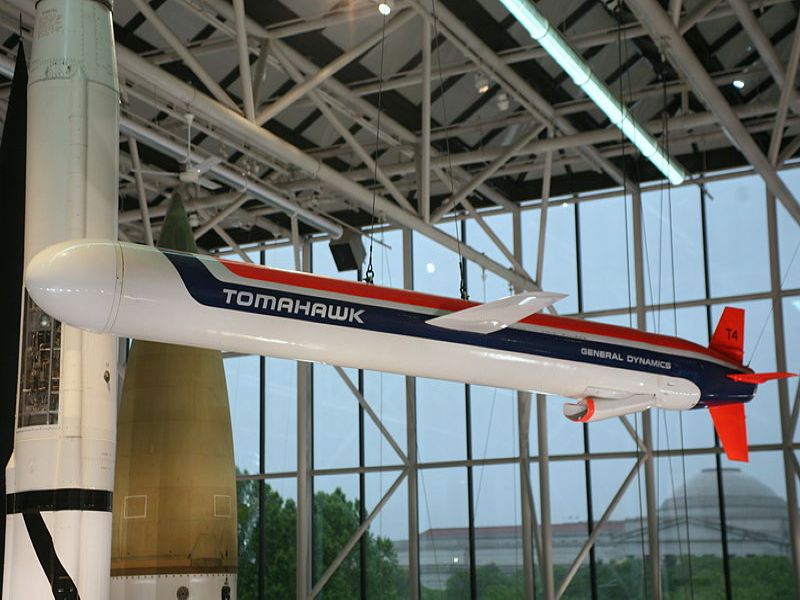
Tomahawk is a long-range, all-weather, subsonic cruise missile in service with the surface ships and submarines of the US and the UK’s Royal Navy. Originally produced by General Dynamics, Tomahawk is currently manufactured by Raytheon.
The Tomahawk Land Attack Missile (TLAM) can strike high-value or heavily defended land targets. The Block II TLAM-A missile achieved initial operating capability in 1984. The missile was first deployed in combat during Operation Desert Storm in 1991.
Recommended White Papers
Augmenting Border Security and Defence With RF Sensor Technology
A crfs guide to strengthening isr capabilities with rf sensor payloads in unmanned aerial vehicles, recommended buyers guides.
Secure messaging solutions for naval applications
Marine navigation systems, software and solutions , tomahawk missile variants.
The Tomahawk family of missiles includes a number of variants, carrying different warheads. The UGM-109A Tomahawk (Block II TLAM-A) carries a W80 nuclear warhead.
RGM / UGM-109C (Block III TLAM-C) is a conventional unitary variant, carrying a 1,000lb-class warhead. RGM / UGM-109D (Block III TLAM-D) is a submunitions dispenser variant armed with 166 combined-effects bomblets.
RGM / UGM-109E Tomahawk (Block IV TLAM-E) is the latest member in the Tomahawk missile family. It carries a 1,000lb-class unitary warhead for a maximum range of 900nmi.
The Tomahawk Block IV missiles were converted and upgraded to Block V in 2017. The upgraded Tomahawk includes extended range, enhanced navigation and communication systems and modernised data-link radio.
The upgrades were performed at Raytheon’s Tucson, Arizona facility. The US Navy will use the upgraded Tomahawk cruise missiles beyond 2040. Raytheon was contracted to integrate the upgraded navigation and communication systems into the Block IV Tactical Tomahawk (TACTOM) missile in March 2020. The upgraded version is known as the Block V TACTOM.
The Block Va variants will be named Maritime Strike and have the capability of hitting a moving target. The Block Vb will feature the Joint Multi-Effects Warhead System.
Tomahawk design features
The Tomahawk is designed to operate at very low altitudes while maintaining high-subsonic speeds. Its modular design enables the integration of numerous types of warheads, guidance and control systems.
The missile carries a nuclear or conventional payload. It can be armed with a nuclear or unitary warhead or a conventional submunitions dispenser with combined-effect bomblets. The missile has a 5.56m length, 51.8cm diameter and a 2.67m wingspan. The weight of the missile is 1,315kg. It has a life span of 30 years.
The Tomahawk weapon system includes the Tomahawk missile, Theatre Mission Planning Centre (TMPC) / Afloat Planning System and the Tomahawk weapon control system (TWCS) for surface vessels or combat control system (CCS) for submarines.
Guidance and control
The Tomahawk Block IV uses GPS navigation and a satellite data-link to continue through a pre-set course. The missile can be reprogrammed in-flight to a new target.
The two-way satellite communications are used to perform post-launch mission changes throughout the flight. The on-board camera provides imagery of the target to the commanders before the strike.
The guidance system is assisted by Terrain Contour Matching (TERCOM). The Digital Scene Matching Area Correlation (DSMAC) system or GPS provide terminal guidance.
The Tactical Tomahawk Weapons Control System (TTWCS) integrated within the ship’s systems computes the path to engage targets. The system enables the planning of new missions on board the launch vessel. TTWCS is also used to communicate with multiple missiles for reassigning the targets and redirecting the missiles in flight.
The Block IV Tomahawk missile is outfitted with advanced electronic support measure (ESM) seeker in Block IV Tomahawk missile. Its joint multi-effects warhead enables the commander to control the blast.
The Tomahawk Block IV missile is powered by a Williams International F415 cruise turbo-fan engine and ARC MK 135 rocket motor. The propulsion provides a subsonic speed of 880km/h.
Tomahawk launch platforms
The missile can be launched from over 140 US Navy ships and submarines and Astute and Trafalgar class submarines of the Royal Navy. All cruisers, destroyers, guided missile and attack submarines in the US Navy are equipped with a Tomahawk weapons system.
US Navy launch platforms were modified to accommodate upgraded Tomahawk missile variants. Four Ohio class nuclear ballistic missile submarines were converted into cruise missile submarines for firing Tomahawk missiles. The Virginia class submarines and the Royal Navy Astute class submarines were also fitted with new vertical launch modules for Tomahawk missile.
Tomahawk orders and deliveries
The US signed a foreign military sales (FMS) agreement with the UK in 1995 to supply 65 Tomahawks for use with the Royal Navy nuclear submarines. The first batch of missiles was delivered in 1998.
The US Government approved an agreement in 2003 to deliver 65 Tomahawk Block IV missiles for the UK. In August 2004, the US Navy placed a $1.6bn multi-year procurement contract with Raytheon for 2,200 Tomahawk Block IV missiles.
Raytheon was awarded a $346m production contract for 473 Tomahawk Block IV cruise missiles in March 2006. The contract includes 65 submarine torpedo tube-launched missiles for the Royal Navy. The Block IV entered service with the Royal Navy in March 2008.
Raytheon was awarded a $207m-worth firm-fixed-price contract in March 2009 for 207 Tomahawk Block IV All-Up-Round (AUR) missiles.
The 2,000th Tomahawk Block IV missile was delivered to the US Navy in February 2010.
The US Navy placed a $338m contract with Raytheon in June 2012 for the delivery of 361 Tomahawk Block IV tactical cruise missiles. Another contract worth $254.6m was awarded for Tomahawk Block IV in the same year.
Raytheon delivered the 3,000th Tomahawk Block IV to the US Navy in January 2014 as part of the ninth Block IV production contract.
The US Navy awarded a $251m contract to Raytheon for the production and delivery of Tomahawk Block IV missiles for both the US Navy and Royal Navy in September 2014.
A $25.9m contract for Tomahawk missile composite capsule launching systems (C/CLS) was awarded in December 2014. The C/CLS is integrated with the nuclear-powered fast-attack submarines and nuclear-powered guided-missile submarines, allowing the missile to be launched from submarines.
Tomahawk Block IV missile demonstrated its moving target capability in tests conducted in February 2015.
Raytheon received a $122m contract from the US Navy in March 2015 for the production of 114 Tomahawk Block IV all-up round missiles. Raytheon conducted an active seeker test flight for the Tomahawk Block IV cruise missile in January 2016.
The 4,000th Tomahawk Block IV missile was delivered to the US Navy in August 2017. The US Navy warships and submarines launched 66 GPS-enabled Tomahawk missiles at Syrian chemical weapon facilities in 2018.
Raytheon planned to undertake recertification and modernisation programmes for Tomahawk Block IV missile in 2019 to add maritime strike capability and multiple-effects warhead upgrades to the missiles.
Raytheon received a $349m contract for phase two of the Maritime Strike Tomahawk Rapid Deployment Capability to improve the Tomahawk cruise missile system in August 2019. Work will be executed in various locations across the US until February 2023.
Related Projects
More Projects
US test naval autonomy technologies under AUKUS Pillar II
Ukraine ‘successfully’ tests first indigenous ballistic missile, ran hit the mark with first naval strike missile firing, modi’s first post-invasion trip to ukraine – what’s on the agenda, sign up for our daily news round-up.
Give your business an edge with our leading industry insights.
Sign up to the newsletter
Your corporate email address.
Naval Technology In Brief
Global Defence Technology
Thematic Take
I consent to Verdict Media Limited collecting my details provided via this form in accordance with Privacy Policy
Thank you for subscribing
View all newsletters from across the GlobalData Media network.
- Missiles of the World
- The United States
Tomahawk at a Glance
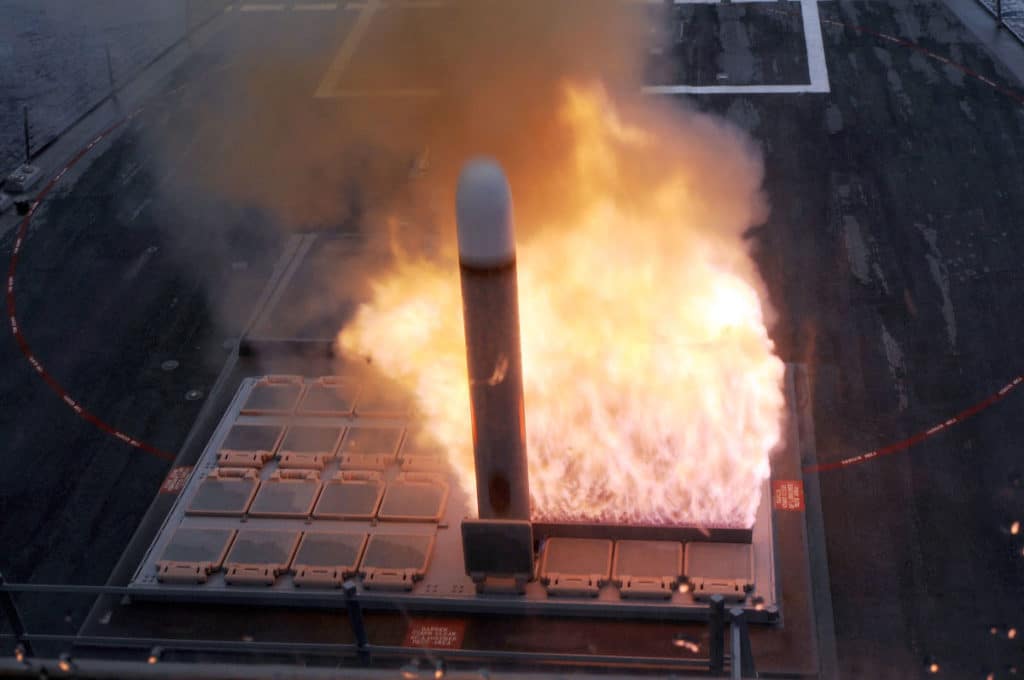
Tomahawk Development
The U.S. Navy began its development of sea-launched cruise missiles in 1972. 2 The Tomahawk was designed to fly at subsonic speed while maintaining a low altitude, making it difficult to detect on radar. It uses tailored guidance systems to maneuver while at such low elevations.
There were three original Tomahawk designs, the nuclear-tipped TLAM-N, the ground-launched Gryphon, and the conventional TASM.
BGM-109G Gryphon
In late 1970s, the U.S. Navy sought a precision land attack cruise missile capable of a much smaller CEP. Two Block II versions were produced; the TLAM-C and the TLAM-D.
Service History
The Tomahawk was first deployed in combat in the 1991 Gulf War in Operation Desert Storm, with the first salvo launched from the USS Paul F. Foster (DD 964) at Iraqi targets. 18 Overall, the mission achieved initial success.
However, before GPS guidance was implemented, the Tomahawk faced serious navigation issues in 2003’s Operation Iraqi Freedom. Due to the indistinct desert terrain in region, the missile’s TERCOM system was not adequate to guide the missile to its targets in Iraq. 19 Approximately ten Tomahawks drifted off course and crashed (”clobbered”) into the ground in Turkey, Saudi Arabia, and Iran in the initial phase of Iraqi Freedom. 20
- “Tomahawk Cruise Missile,” United States Navy Fact File, August 14, 2014, http://www.navy.mil/navydata/fact_display.asp?cid=2200&tid=1300&ct=2
- “Tomahawk Cruise Missile,” United States Navy Fact File, August 14, 2014, http://www.navy.mil/navydata/fact_display.asp?cid=2200&tid=1300&ct=2.
- Sam LaGrone, “West: U.S. Navy Anti-Ship Tomahawk Set for Surface Ships, Subs Starting in 2021,” USNI News , February 18, 2016, https://news.usni.org/2016/02/18/west-u-s-navy-anti-ship-tomahawk-set-for-surface-ships-subs-starting-in-2021.
- “Tomahawk Long-Range Cruise Missile,” Naval Technology, http://www.naval-technology.com/projects/tomahawk-long-range-cruise-missile/.
- “RGM/UGM-109 Tomahawk,” in IHS Jane’s Weapons: Strategic 2015-2016, ed. James C. O’Halloran (United Kingdom: IHS, 2015), 219-223.
- “General Dynamics/McDonnell Douglas BGM-109G Gryphon” National Museum of the Air Force, April 26, 2011.http://www.nationalmuseum.af.mil/factsheets/factsheet.asp?id=18194.
- Missile Defense Project, “Tomahawk,” Missile Threat, Center for Strategic and International Studies, September 19, 2016, last modified June 15, 2018, https://missilethreat.csis.org/missile/tomahawk/ .
- Fuller, Malcolm. “Tomahawk/RGM/UGM-109B/C/D/E” Jane’s Weapons: Naval. December 17, 2012.
- Department of the Navy, Naval Vessel Historical Evaluation – Paul F. Foster Final Determination (Washington, DC: 2013), https://www.navsea.navy.mil/Portals/103/Documents/TeamShips/SEA21/InactiveShips/Historic/2013/EDD964-Paul-F.-Foster-Final-DOI.pdf.
- “The Tomahawk Missile’s First Mission Was Over…Iran?,” War on the Rocks, April 6, 2015, https://warisboring.com/the-tomahawk-missile-s-first-mission-was-over-iran/.
- Jeffrey Lewis, ”Why the Navy Should Retire TLAM-N,” Arms Control Wonk (blog), December 13, 2009, https://www.armscontrolwonk.com/archive/202560/why-the-navy-should-retire-tlam-n/.
- “What is a Tomahawk Missile?” History.com, April 7, 2017, https://www.history.com/news/what-is-a-tomahawk-missile.
- NBC News, “U.S. Launches Missiles at Syrian Base Over Chemical Weapons Attack,” NBC News, April 7, 2017, http://www.nbcnews.com/news/us-news/u-s-launches-missiles-syrian-base-after-chemical-weapons-attack-n743636.
This Is Not Your Father’s Tomahawk Cruise Missile
The new Block V can run down enemy ships and blast them with a half-ton high explosive warhead.
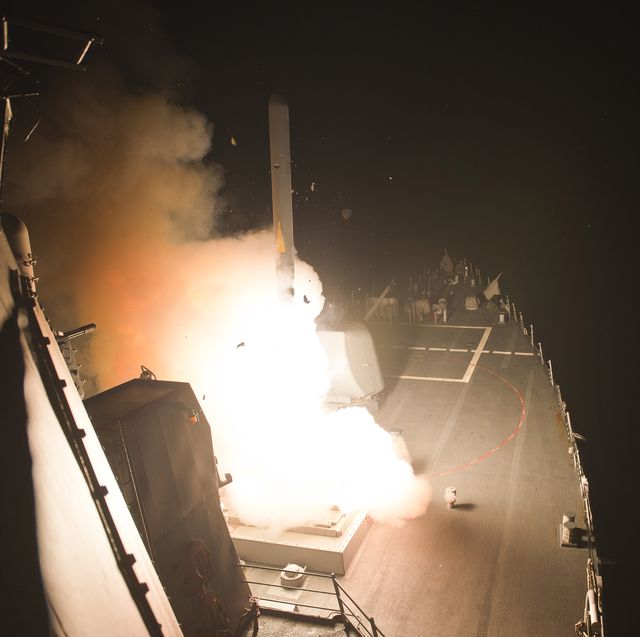
Gear-obsessed editors choose every product we review. We may earn commission if you buy from a link. Why Trust Us?
- The new missiles can attack enemy ships at sea or land targets with a new multi-effect warhead.
- The Tomahawk design is nearly half a century old but with the help of rolling upgrades has remained a viable weapon system.
The Tomahawk cruise missile, one of the oldest missiles in U.S. military service, is set to receive a new set of capabilities designed to help keep potential enemies in check.
➡ You love badass military tech. So do we. Let's nerd out over it together.
The missile’s new Block V configuration will include both new anti-shipping and land attack variants, boosting the capabilities of the U.S. Navy surface warships that carry them.
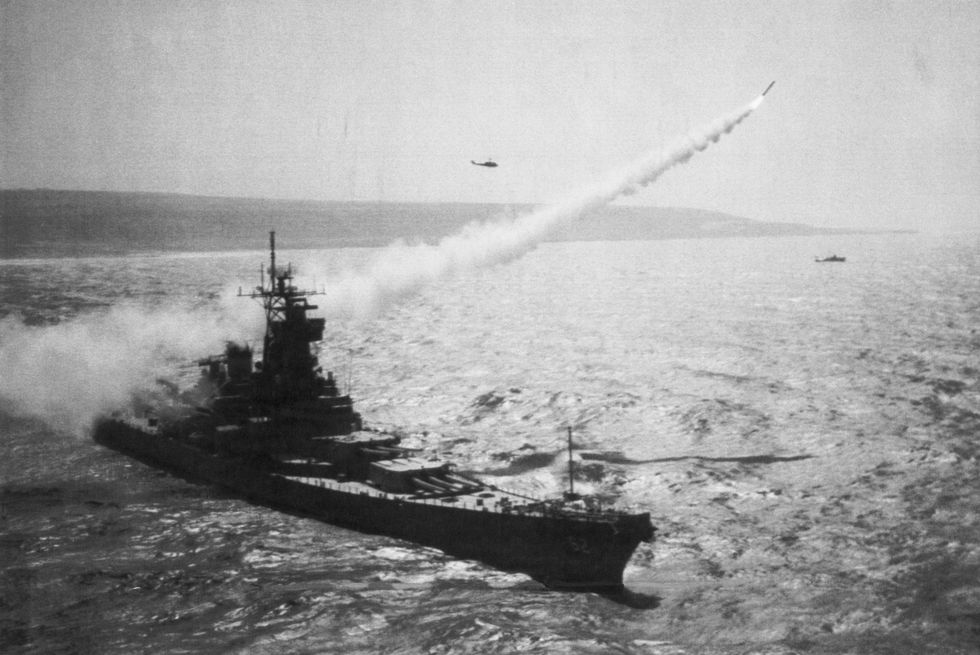
The Tomahawk is one of the most effective missiles in the Pentagon’s history. The missile, which General Dynamics first designed in the 1970s, was one of the first truly effective cruise missiles. Unlike traditional missiles that use rocket motors, fly high altitudes, and travel at Mach 2+ speeds, cruise missiles use turbojet engines, fly at low altitudes, and travel at subsonic speeds.
Most missiles are designed to sprint to their targets; Tomahawk is designed to run a marathon. Engineers chose a liquid fuel-sipping turbojet engine because it enabled greater range than a rocket engine of roughly the same size. A slower speed also makes low altitude flight more viable, which in turn makes the missile much more difficult to detect by radar. Today, most advanced countries operate similar low-flying subsonic missiles, including Russia, China, France, and South Korea.

Despite its age, the Tomahawk has stayed in the game through a series of progressive upgrades. The original Block I version included both nuclear-tipped and anti-ship versions of the missile. Block II introduced land attack capabilities, like those demonstrated during the 1991 Gulf War, with missiles striking Iraqi Air Force airfields and daytime targets across the Iraqi capital of Baghdad. Block III added GPS, eliminating a time-consuming programming system that required 80 hours to plot a missile’s course as well as a loitering capability.
Block IV Tomahawks added more features, including the ability to be re-routed to new targets in mid-flight. Block IV missiles also feature a camera and datalink, allowing a missile to send imagery back to friendly forces. If a Tomahawk discovers its target already struck or civilians are crowding the target area, the missile can be re-routed to destroy something else.
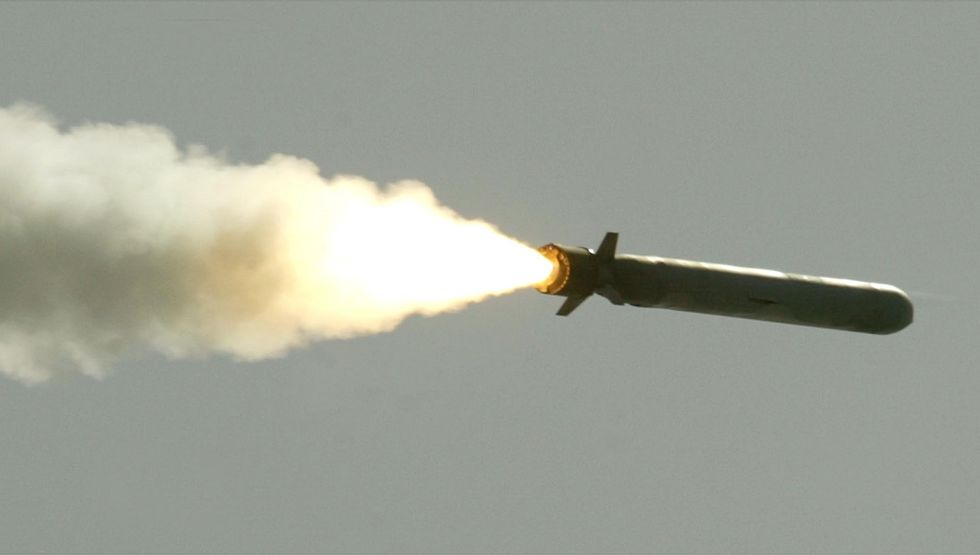
Now, Block V is where it gets really interesting.
The newest variant adds upgraded navigation and communications gear to older Tomahawks, electronics that, according to Defense News , make it easier to work through electronic warfare jamming and more difficult for enemy radars to detect. That’s important, because once detected, subsonic cruise missiles are relatively easy to shoot down. Block V then forks into two missiles, Block Va and Block Vb.
The Coolest Military Toys
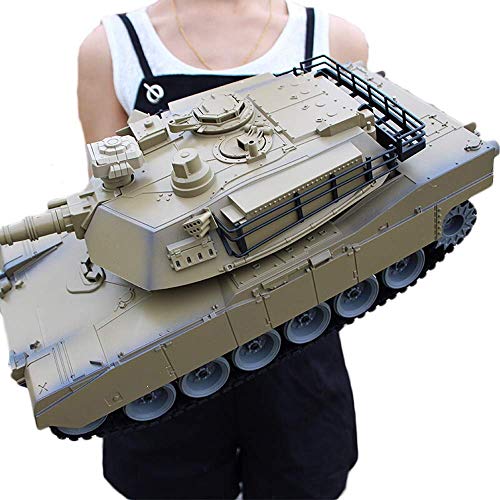
GRTVF 1:18 Scale RC Tank German Tiger Panzer

Tletiy Soviet T34 Mini RC Tank
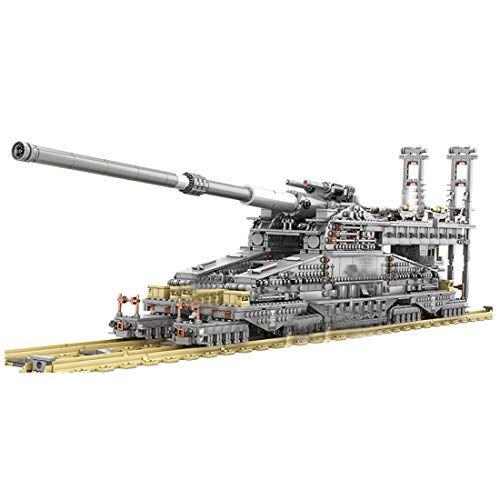
PeleusTech 3,846-Piece Model WWII German Dora Cannon

Big Bang 9-Inch 6F Light Field Vintage Cannon
Block Va essentially turns the cruise missile into an anti-ship missile. Also known as Maritime Strike Tomahawk, Block Va adds a seeker kit, including sensor, giving it the ability to strike moving targets at sea at ranges in excess of 1,000 miles. It’s not clear if Block Va can still strike land targets.
Block Vb is more oriented toward striking land targets with the new Joint Multiple Effects Warhead (MEWS). The weapon is a bit mysterious, but it seems to be a 1,000-pound warhead capable of striking both surface and underground hardened targets, including “integrated air defense systems and weapons of mass destruction” .
The great thing about Block V is that, unlike the Navy’s current anti-ship missile, it doesn’t need separate launchers. Block Vs will fit in any Mk. 41 vertical launch system silo—the same silo that currently carries Standard anti-air missiles, the SM-3 missile interceptor, Evolved Sea Sparrow interceptor missiles, and vertical launch anti-submarine rockets.
Today’s guided missile cruisers carry 122 silos, while destroyers carry between 90 and 96 silos. Theoretically, a cruiser could carry up to 122 Block Va missiles, though a more rounded mix of all of the above is preferred. Block V will also arm U.S. Navy submarines.
Like a lot of weapons in America’s arsenal, the Tomahawk missile is old—at least in concept. What started out as a nuclear-capable missile can now hunt down warships at 1,000 miles and attack hardened underground targets. The missile’s ability to adapt with the times, take on new roles, and reinvent itself means it will be a potent weapon system for easily another decade to come.
Now Watch This:
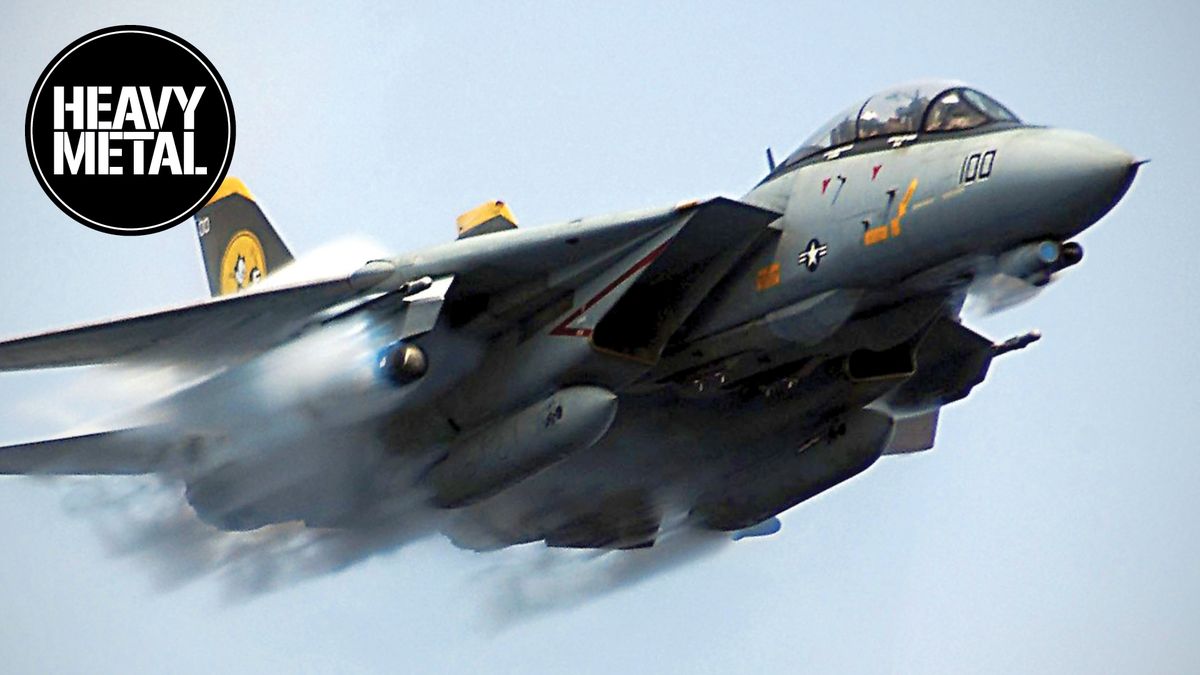
Kyle Mizokami is a writer on defense and security issues and has been at Popular Mechanics since 2015. If it involves explosions or projectiles, he's generally in favor of it. Kyle’s articles have appeared at The Daily Beast, U.S. Naval Institute News, The Diplomat, Foreign Policy, Combat Aircraft Monthly, VICE News , and others. He lives in San Francisco.
.css-cuqpxl:before{padding-right:0.3125rem;content:'//';display:inline;} Weapons .css-xtujxj:before{padding-left:0.3125rem;content:'//';display:inline;}
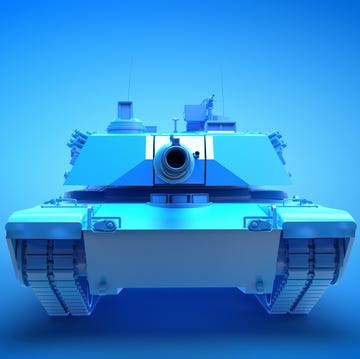
Russian Flaunts Nuclear-Tipped Air-to-Air Missile
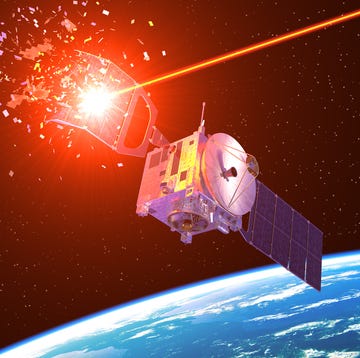
The Space Force is Calling for “Fires” in Space

U.S. Not Ready for a Major War: Report
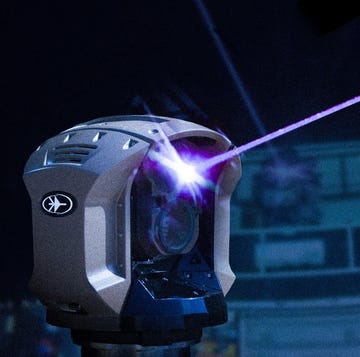
Israel’s New $1 Billion Laser Will Be Unstoppable

Could the Pentagon Adapt Weapons to New Missions?
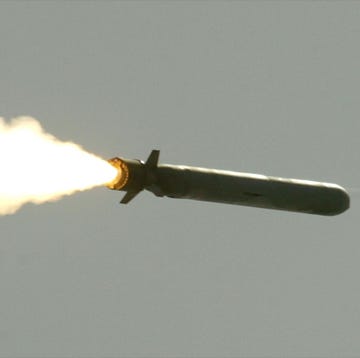
Army Sending Hypersonic Missiles to Face Russia

The U.S. May Buy Israeli Missiles for Ukraine
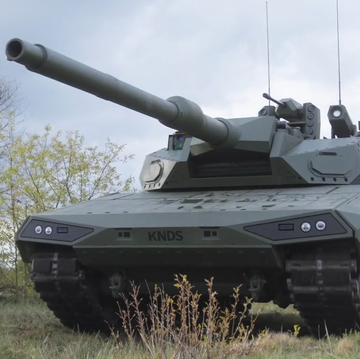
Tanks With Multiple Cannons Are Having a Moment
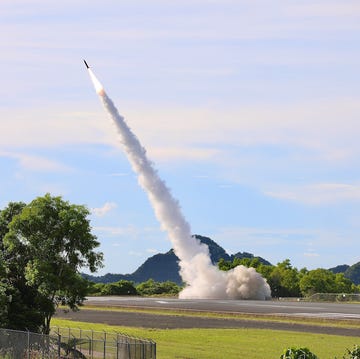
The Army is Back to Shooting at Enemy Warships

The World’s Most Powerful Tank is European
America’s Cruisers are Sailing into the Sunset
- Terms of Use
War News | Military History | Military News
Tomahawk missiles: a modular, incredibly accurate and brutally lethal weapon.
- War Articles
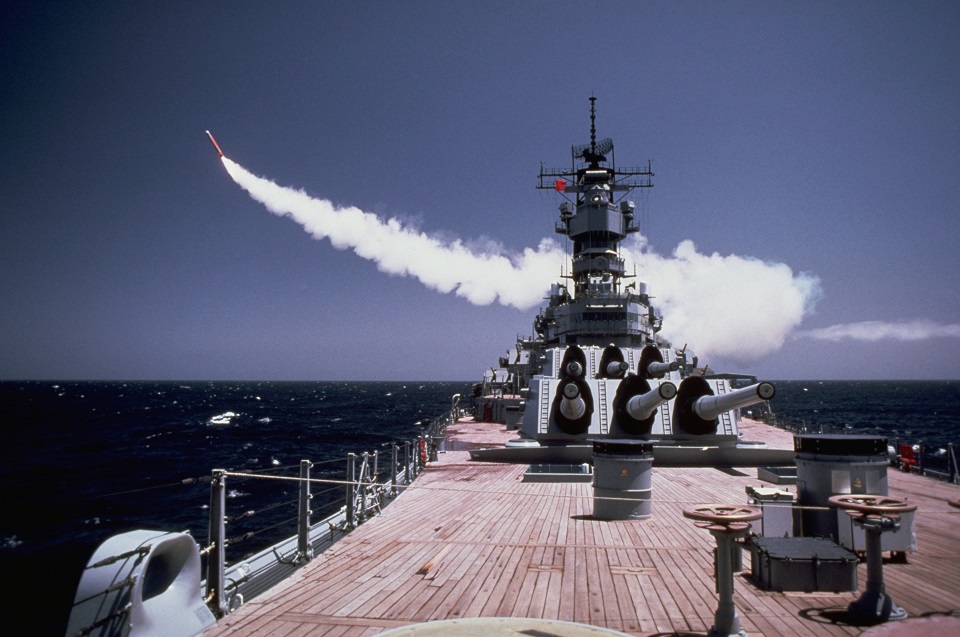
The Tomahawk missile first joined the US Navy fleet in 1983 and following multiple recertifications, has continued to be an integral weapon for ship and submarine-based land-attack operations. Although it has been frequently employed since its creation, the Tomahawk missile is most notable for its use in the Persian Wars .

Tomahawk Missile’s Feature Some Incredible Capabilities
Priced at approximately $1 million apiece , the Tomahawk missile packs a major punch. It can reach a speed of up to 550 miles per hour, reach a distance of 700 to 1350 nautical miles depending on which variant of the missile is fired, and successfully reach its target even in heavily defended air space.
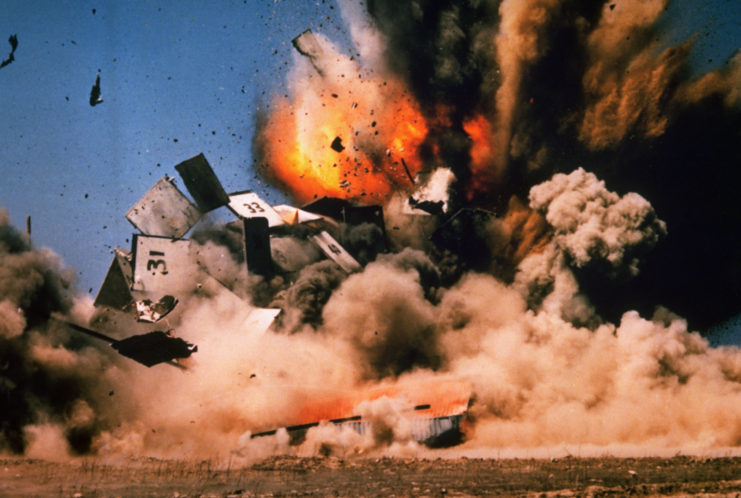
The missile can carry 160 bomblets, a 1,000-pound conventional warhead, or a W80 nuclear warhead. Using GPS, inertial navigation, and terrain contour matching, the Tomahawk has the ability to hit within ten yards of its intended target. It can also perform evasive maneuvers at extremely low altitudes, allowing it to take out diverse targets and do so without causing much collateral damage.
Tomahawk Missiles are built for Mods
The physical look of the weapon is intended to resemble a “flying torpedo”, which it does nicely. The look of the missile has remained pretty much the same since its beginning. The slim design allows the missile to be compatible with vertical launchers on surface warships as well as torpedo tubes on submarines .
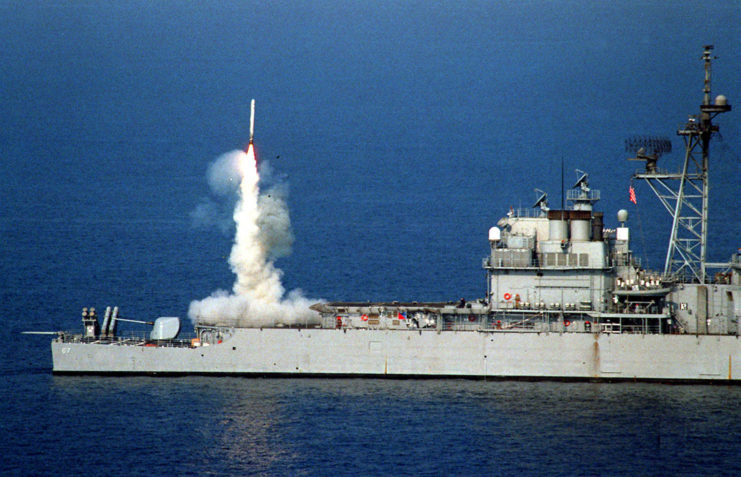
The overall shelf life of the missile is 30 years and requires recertification at the time of expiration. Recertification allows ample opportunity to apply modifications to the missile that increase its lethality while also ensuring that the missile is still ready for combat.
The Tomahawk missile was built with a modular design, which makes internal modifications and upgrades relatively simple. Specifications that work efficiently can remain in the missile, while specifications that need to be replaced are done so without affecting the rest of the internal makeup of the missile.
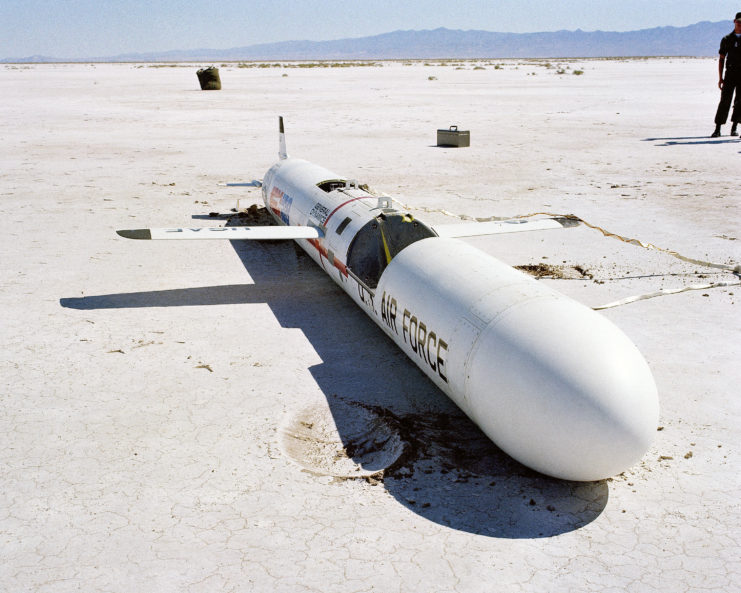
Block Va/Vb
Block Va allows this variant of the Tomahawk to strike moving targets at sea. It has a new seeker that is capable of accurately identifying and targeting warships as far as 1,000 miles away. This variant brings the US Navy up to speed with Russian and Chinese adversaries that were already equipped with long-range anti-ship munitions.
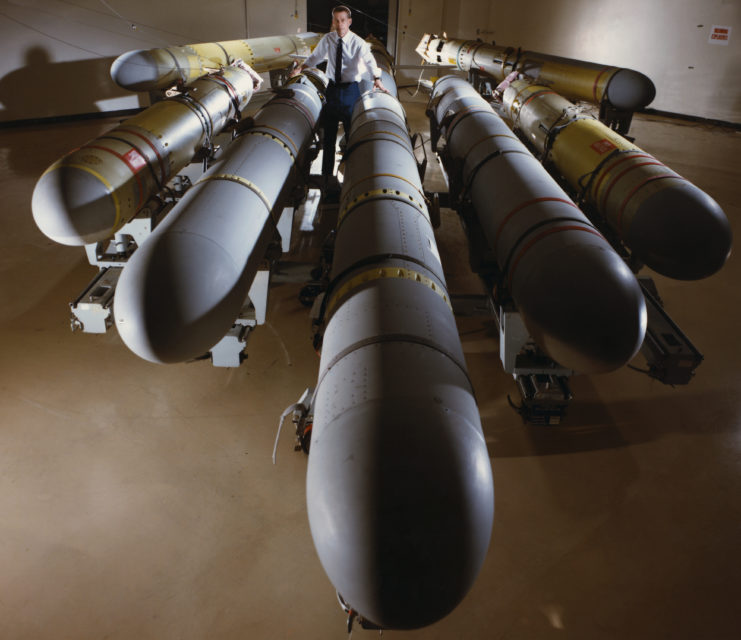
Block Vb has a joint multi-effects warhead that allows the Tomahawk to hit more diverse land targets. It is a hard-target kill variant that is capable of destroying densely-constructed enemy assets which previously would have required more specialized munitions.
International interest
Beyond its use by the US, the Tomahawk missile has also been used by the United Kingdom’s Royal Navy in a number of operations, and now all Royal Navy fleet submarines are Tomahawk missile capable. Additionally, there had previously been expressed interest in acquiring the missile by countries like Spain, the Netherlands, Canada, and Australia, though many had not followed through with their orders.
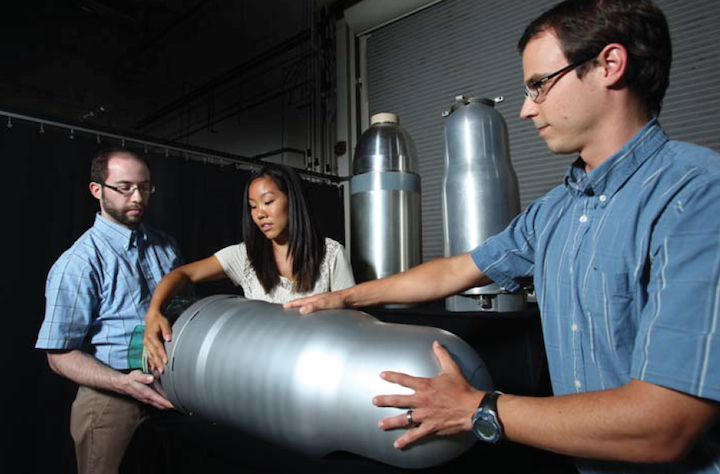
W80-1 Warhead Selected For New Nuclear Cruise Missile
The U.S. Nuclear Weapons Council has selected the W80-1 thermonuclear warhead for the Air Force’s new nuclear cruise missile (Long-Range Standoff, LRSO) scheduled for deployment in 2027.
The W80-1 warhead is currently used on the Air Launched Cruise Missile (ALCM), but will be modified during a life-extension program and de-deployed with a new name: W80-4.
Under current plans, the ALCM will be retired in the mid-2020s and replaced with the more advanced LRSO, possibly starting in 2027.
The enormous cost of the program – $10-20 billion by some estimates – is robbing defense planners of resources needed for more important non-nuclear capabilities.
Even though the United States has thousands of nuclear warheads on ballistic missiles and is building a new penetrating bomber to deliver nuclear bombs, STRATCOM and Air Force leaders are arguing that a new nuclear cruise missile is needed as well.
But their description of the LRSO mission sounds a lot like old-fashioned nuclear warfighting that will add new military capabilities to the arsenal in conflict with the administration’s promise not to do so and reduce the role of nuclear weapons.
What Kind of Warhead?
The selection of the W80-1 warhead for the LRSO completes a multi-year process that also considered using the B61 and W84 warheads.
The W80-4 selected for the LRSO will be the fifth modification name for the W80 warhead (see table below): The first was the W80-0 for the Navy’s Tomahawk Land-Attack Cruise Missile (TLAM/N), which was retired in 2011; the second is the W80-1, which is still used the ALCM; the third was the W80-2, which was a planned LEP of the W80-0 but canceled in 2006; the fourth was the W80-3, a planned LEP of the W80-1 but canceled in 2006.

The W80-4 will be the fifth modification name for the W80 warhead.
The B61 warhead has been used as the basis for a wide variety of warhead designs . It currently exists in five gravity bomb versions (B61-4, B61-4, B61-7, B61-10, B61-11) and was also used as the basis for the W85 warhead on the Pershing II ground-launched ballistic missile. After the Pershing II was eliminated by the INF Treaty, the W85 was converted into the B61-10. But the B61 was not selected for the LRSO partly because of concern about the risk of common-component failure from basing too many warheads on the same basic design.
The W84 was developed for the ground-launched cruise missile (BGM-109G), another weapon eliminated by the INF Treaty. As a more modern warhead, it includes a Fire Resistant Pit (which the W80-1 does not have) and a more advanced Permissive Action Link (PAL) use-control system. The W84 was retired from the stockpile in 2008 but was brought back as a LRSO candidate but was not selected, partly because not enough W84s were built to meet the requirement for the planned LRSO inventory.
Cost Estimates
In the past two year, NNSA has provided two very different cost estimates for the W80-4. The FY2014 Stockpile Stewardship and Management Plan (SSMP) published in June 2013 projected a total cost of approximately $11.6 billion through 2030. The FY2015 SSMP, in contrast, contained a significantly lower estimate: approximately $6.8 billion through 2033 (see graph below).

Official cost estimates for the W80-4 vary significantly.
The huge difference in the cost estimates (nearly 50%) is not explained in detail in the FY2015 SSMP, which only states that the FY2014 numbers were updated with a smaller “escalation factor” and “improvements in the cost models.” Curiously, the update only reduces the cost for the years that were particularly high (2019-2027), the years with warhead development and production engineering. The two-third reduction in the cost estimate may make it easier for NNSA to secure Congressional funding, but it also raises significant uncertainty about what the cost will actually be.
Assuming a planned production of approximately 500 LRSOs (there are currently 528 ALCMs in the stockpile and the New START Treaty does not count or limit cruise missiles), the cost estimates indicate a complex W80-4 LEP on par with the B61-12 LEP. NNSA told me the plan is to use many of the non-nuclear components and technologies on the W80-4 that were developed for the B61-12.
In addition to the cost of the W80-4 warhead itself, the cost estimate for completing the LRSO has not been announced but $227 million are programmed through 2019. Unofficial estimates put the total cost for the LRSO and W80-4 at $10-20 billion. In addition to these weapons costs, integration on the B-2A and next-generation long-range bomber (LRS-B) will add hundreds of millions more.

The W80-1 is not big, seen here with the author at the nuclear museum in Albuquerque, but it packs explosive yields of 5-150 kilotons.
What’s The Mission?
Why does the Air Force need a new nuclear cruise missile?
During a recent meeting with Pentagon officials, I asked why the LRSO was needed, given that the military also has gravity bombs on its bombers. “Because of what you see on that map,” a senior defense official said pointing to a large world map on the wall. The implication was that many targets would be risky to get to with a bomber. When reminded that the military also has land- and sea-based ballistic missiles that can reach all of those targets, another official explained: “Yes but they’re all brute weapons with high-yield warheads. We need the targeting flexibility and lower-yield options that the LRSO provides.”
The assumption for the argument is that if the Air Force didn’t have a nuclear cruise missile, an adversary could gamble that the United States would not risk an expensive stealth bomber to deliver a nuclear bomb and would not want to use ballistic missiles because that would be escalating too much. That’s quite an assumption but for the nuclear warfighter the cruise missile is seen as this great in-between weapon that increases targeting flexibility in a variety of regional strike scenarios.
That conversation could have taken place back in the 1980s because the answers sounded more like warfighting talk than deterrence. The two roles can be hard to differentiate and the Air Force’s budget request seems to include a bit of both: the LRSO “will be capable of penetrating and surviving advanced Integrated Air Defense Systems (IADS) from significant stand off range to prosecute strategic targets in support of the Air Force’s global attack capability and strategic deterrence core function.”
The deterrence function is provided by the existence of the weapon, but the global attack capability is what’s needed when deterrence fails. At that point, the mission is about target destruction: holding at risk what the adversary values most. Getting to the target is harder with a cruise missile than a ballistic missile, but it is easier with a cruise missile than a gravity bomb because the latter requires the bomber to fly very close to the target. That exposes the platform to all sorts of air defense capabilities. That’s why the Pentagon plans to spend a lot of money on equipping its next-generation long-range bomber (LRS-B) with low-observable technology.
The LRSO is therefore needed, STRATCOM commander Admiral Cecil Haney explained in June, to “effectively conduct global strike operations in the anti-access, access-denial environments.” When asked why they needed a standoff missile when they were building a stealth bomber, Haney acknowledge that “if you had all the stealth you could possibly have in a platform, then gravity bombs would solve it all.” But the stealth of the bomber will diminish over time because of countermeasures invented by adversaries, he warned. So “having standoff and stealth is very important” given how long the long-range bomber will operate into the future.

Lt. Gen. Stephen Wilson, the head of Air Force Global Strike Command, says the LRSO is needed to shoot holes in air defense systems.
Still, one could say that for any weapon and it doesn’t really explain what the nuclear mission is. But around the same time Admiral Haney made his statement, Air Force Global Strike Command commander General Wilson added a bit more texture: “There may be air defenses that are just too hard, it’s so redundant, that penetrating bombers become a challenge. But with standoff, I can make holes and gaps to allow a penetrating bomber to get in, and then it becomes a matter of balance.”
In this mission, the LRSO would not be used to keep the stealth bomber out of harms way per ce but as a nuclear sledgehammer to “kick down the door” so the bomber – potentially with B61-12 nuclear bombs in its bomb bay – could slip through the air defenses and get to its targets inside the country. Rather than deterrence, this is a real warfighting scenario that is a central element of STRATCOM’s Global Strike mission for the first few days of a conflict and includes a mix of weapons such as the B-2, F-22, and standoff weapons.
But why the sledgehammer mission would require a nuclear cruise missile is still not clear, as conventional cruise missiles have become significantly more capable against air defense and hard targets. In fact, most of the Global Strike scenarios would involve conventional weapons, not nuclear LRSOs. The Air Force has a $4 billion program underway to develop the Joint Air-to-Surface Standoff Missile (JASSM) and an extended-range version (JASSM-ER) for deliver by B-1B, B-2A, B-52H bombers and F-15E, F-16, and F-35 fighters. A total of 4,900 missiles are planned, including 2,846 JASSM-ERs.

The next-generation bomber will be equipped with non-nuclear weapons such as the Joint Air-to-Surface Standoff Missile (JASSM) that will provide it with a standoff capability similar to the LRSO, although with shorter range.
Since the next-generation long-range bomber would also be the launch platform for those conventional weapons, it will be exposed to the same risks with or without a nuclear LRSO.
Most recently, according to the Nuclear Security & Deterrence Monitor , Gen. Wilson added another twist to the justification:
“If I take a bomber, and I put standoff cruise missiles on it, in essence, it becomes very much like a sub. It’s got close to the same magazine capacity of a sub. So once I generate a bomber with standoff cruise missiles, it becomes a significant deterrent for any adversary. We often forget that. It possesses the same firepower, in essence, as a sub that we can position whenever and wherever we want, and it becomes a very strong deterrent. So I’m a strong proponent of being able to modernize our standoff missile capability.”
Although the claim that a bomber has “close to the same capacity of a sub” is vastly exaggerated (it is up to 20 warheads on 20 cruise missiles on a B-52H bomber versus 192 warheads on 24 sea-launched ballistic missiles on an Ohio-class submarine), the example helps illustrates the enormous overcapacity and redundancy in the current arsenal.
What Kind of Missile?
Although we have yet to see what kind of capabilities the LRSO will have, the Air Force description is that LRSO “will be capable of penetrating and surviving advanced Integrated Air Defense Systems (IADS) from significant stand off range to prosecute strategic targets in support of the Air Force’s global attack capability and strategic deterrence core function.”
There is every reason to expect that STRATCOM and the Air Force will want the weapon to have better military capabilities than the current Air Launched Cruise Missile (ALCM), perhaps with features similar to the Advanced Cruise Missile (ACM). After all, so the thinking goes, air defenses have improved significantly since the ALCM was deployed in 1982 and the LRSO will have to operate well into the middle of the century when air defense systems can be expected to be even better than today.
With a 3,000-km range similar to the ACM, the LRSO would theoretically be able to reach targets in much of Russia and most of China from launch-positions 1,000 kilometers from their coasts. Most of Russia and China’s nuclear forces are located in these areas.
In thinking about which capabilities would be needed for the LRSO, it is useful to recall the last time the warfighters argued that an improved cruise missile was needed. The ALCM was also “designed to evade air and ground-based defenses in order to strike targets at any location within any enemy’s territory,” but that was not good enough. So the Advanced Cruise Missile (ACM) was developed and deployed in 1992 to provide “significant improvements” over the ALCM in “range, accuracy, and survivability.” The rest of the mission was similar – “evade air and ground-based defenses in order to strike heavily defended, hardened targets at any location within any enemy’s territory” – but the requirement to hold at risk “heavily defended, hardened targets” was unique.
Yet when comparing the ALCM and ACM mission requirements and capabilities with the operational experience, GAO in 1993 found that “air defense threats had been overestimated” and that “tests did not demonstrate low ALCM survivability.” The ACM’s range was found to be “only slightly better than the older ALCM’s demonstrated capability,” and GAO concluded that “the improvement in accuracy offered by the ACM appears to have little real operational significance.”

The ACM was produced at great cost to provide improved targeting capabilities over the ALCM but apparently had little operational significance and was retired early in 2007. Will LRSO repeat the mistake?
Nonetheless, the ACM was produced in 1992-1993 at a cost of more than $10 billion. Strategic Air Command initially wanted 1461 missiles, but the high cost and the end of the Cold War caused Pentagon to cut the program to only 430 missiles. A sub-sonic cruise missile with a range of 3,000 kilometers (1,865 miles) and hard-target kill capability with the W80-1 warhead, the ACM was designed for external carriage on the B-52H bomber, with up to 12 missiles under the wings. The B-2 was also capable of carrying the ACM but as a penetrating stealth bomber there was never a need to assign it the stealthy standoff missile as well.
The ACM was supposed to undergo a life extension program to extend it to 2030, but after only 15 years of service the missile was retired early in 2007. An Enhanced Cruise Missile (ECM) was planned by the Bush administration, but it never materialized. It is likely, but still not clear, that LRSO will make use of some of the technologies from the ACM and ECM programs.
Conclusions and Recommendations
The W80-1 warhead has been selected to arm the new Long-Range Standoff (LRSO) missile, a $10-20 billion weapon system the Air Force plans to deploy in the late-2020s but can poorly afford.
Even though the United States has thousands of nuclear warheads on land- and sea-based ballistic missiles that can reach the same targets intended for the LRSO, the military argues that a new nuclear standoff weapon is needed to spare a new penetrating bomber from enemy air-defense threats.
Yet the same bomber will be also equipped with conventional weapons – some standoff, some not – that will expose it to the same kinds of threats anyway. So the claim that the LRSO is needed to spare the next-generation bomber from air-defense threats sounds a bit like a straw man argument.
The mission for the LRSO is vague at best and to the extent the Air Force has described one it sounds like a warfighting mission from the Cold War with nuclear cruise missiles shooting holes in enemy air defense systems. Given the conventional weapon systems that have been developed over the past two decades, it is highly questionable whether such a mission requires a nuclear cruise missile.

The Air Force has a large inventory of W80-1 warheads. Nearly 2,000 were built, 528 are currently used on the ALCM, and hundreds are in storage at the Kirtland Underground Maintenance and Munitions Storage Complex (KUMMSC) near Kirtland AFB in New Mexico.
The warfighters and the strategists might want a nuclear cruise missile as a flexible weapon for regional scenarios. But good to have is not the same as essential. And the regional scenarios they use to justify it are vague and largely unknown – certainly untested – in the public debate.
In the nuclear force structure planned for the future, the United States will have roughly 1,500 warheads deployed on land- and sea-based ballistic missiles. Nearly three-quarters of those warheads will be onboard submarines that can move to positions off adversaries anywhere in the world and launch missiles that can put warheads on target in as little as 15 minutes.
It really stretches the imagination why such a capability, backed up by nuclear bombs on bombers and the enormous conventional capability the U.S. military possesses, would be insufficient to deter or dissuade any potential adversary that can be deterred or dissuaded.
As the number of warheads deployed on land- and sea-based ballistic missiles continues to drop in the future, long-range, highly accurate, stealthy, standoff cruise missiles will increasingly complicate the situation. These weapons are not counted under the New START treaty and if a follow-on treaty does not succeed in limiting them, which seems unlikely in the current political climate, a new round of nuclear cruise missile deployments could become real spoilers. There are currently more ALCMs than ICBMs in the U.S. arsenal and with each bomber capable of loading up to 20 missiles the rapid upload capacity is considerable.
Under the 1,500 deployed strategic warhead posture of the New START treaty, the unaccounted cruise missiles could very quickly increase the force by one-third to 2,000 warheads. Under a posture of 1,000 deployed strategic warheads, which the Obama administration has proposed for the future, the effect would be even more dramatic: the air-launched cruise missiles could quickly increase the number of deployed warheads by 50 percent. Not good for crisis stability!
As things stand at the moment, the only real argument for the new cruise missile seems to be that the Air Force currently has one, but it’s getting old, so it needs a new one. Add to that the fact that Russia is also developing a new cruise missile, and all clear thinking about whether the LRSO is needed seems to fly out the window. Rather than automatically developing and deploying a new nuclear cruise missile, the administration and Congress need to ask tough questions about the need for the LRSO and whether the money could be better spent elsewhere on non-nuclear capabilities that – unlike a nuclear cruise missile – are actually useful in supporting U.S. national and international security commitments.
This publication was made possible by a grant from the New Land Foundation and Ploughshares Fund. The statements made and views expressed are solely the responsibility of the author.
Unique social media images reveal the likely retirement of an old Indian nuclear-capable system.
The Federation of American Scientists applauds the United States for declassifying the number of nuclear warheads in its military stockpile and the number of retired and dismantled warheads.
North Korea may have produced enough fissile material to build up to 90 nuclear warheads.
Secretary Austin’s likely certification of the Sentinel program should be open to public interrogation, and Congress must thoroughly examine whether every requirement is met before allowing the program to continue.
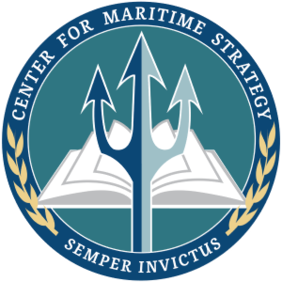
A Nuclear Sea-Launched Cruise Missile Sooner, Rather than Later
By Eli Glickman
“The current situation in Ukraine and China’s nuclear trajectory have further convinced me that a deterrence and assurance gap exists,” argued Admiral Charles Richard–then Commander of U.S. Strategic Command–in 2022 when he endorsed a nuclear sea-launched cruise missile capability (SLCM-N) as “necessary to enhance deterrence and assurance.”
After conducting its Nuclear Posture Review, the Biden Administration cut the SLCM-N. Congress, however, has continued to fund SLCM-N, and House Republicans led a push during the markup process for the 2024 National Defense Authorization Act to formally make SLCM-N a program of record.
The program, however, is likely to cost too much and come too late. Admiral Michael Gilday, then Chief of Naval Operations, estimated that the warheads for SLCM-N would cost $31 billion alone. Furthermore, when it was originally scrapped by the Biden Administration, senior Department of Defense officials estimated that, even if the program was fully funded, SLCM-N could not be delivered until 2035, much too late to deter Chinese nuclear escalation in a potential invasion of Taiwan that could occur before the end of the decade. Given the rigidity of defense procurement timelines, Congress should direct the Department of Defense to explore alternative capabilities to stand-in for SLCM-N in the near-term.
Luckily, the pieces are already there. As of 2022, the U.S. Navy had a stockpile of 4,000 Tomahawk Land Attack Missiles (TLAMs)—long range cruise missiles fired from surface ships and submarines. Open-source estimates indicate that the U.S. also has roughly 1,900 nuclear warheads kept in reserve. The United States could therefore constitute a SLCM-N capability by modifying a portion of these warheads to decrease their explosive yields and fitting them onto existing TLAMs. This is very likely to be technically feasible, as the Navy used to have nuclear-tipped TLAMs, which were retired in 2013.
A reconstituted nuclear-tipped TLAM would check all the boxes for deterrence and assurance that SLCM-N might check. Kyle Balzer of the American Enterprise Institute argued that SLCM-N, if deployed on nuclear-powered fast-attack submarines, would be deployable across the world, highly survivable, and be capable of penetrating China’s anti-access/area denial perimeter in the Indo-Pacific. A nuclear TLAM deployed on a fast-attack submarine would deliver the same capability. Moreover, a tactical nuclear weapon delivered by a cruise missile would be an inherently more credible deterrent than larger, ballistic-launched strategic nuclear weapons because it would be easier to use without inviting devastating retaliation. A TLAM is a suitable delivery platform for meeting these needs in the near-term, although a more advanced cruise missile might be necessary farther in the future.
Opponents of a SLCM-N contend that it would exacerbate escalation risks and could make nuclear weapons ‘more usable.’ This claim, counterintuitively, helps explain why tactical nuclear weapons are important tools. Simply put, a weapon that is more usable is a more credible deterrent because America’s adversaries would be more likely to believe the U.S. would actually use it. Brad Roberts, the director of the Center for Global Security Research at Lawrence Livermore National Laboratory, has argued that Chinese and Russian theories of victory consider nuclear weapons to be “instruments of coercion, blackmail, and brinksmanship” which could be used in a limited fashion to signal resolve and “persuade the United States and/or its allies to back down.” Given its credibility advantage, SLCM-N—or a nuclear-armed TLAM—would signal to China and Russia that neither country could gain an advantage from executing a coercive limited nuclear strike. A nuclear-tipped TLAM is therefore a credible deterrent and an effective near-term stand-in for SLCM-N.
Opponents also argue that deploying SLCM-N would reduce the availability of vertical launch tubes for conventional TLAMs on fast-attack submarines. That concern notwithstanding, Admiral Gilday expressed his confidence in the Navy’s ability to certify and deploy SLCM-N on its vessels. Moreover, it would be very difficult for U.S. adversaries to know whether a given Virginia-class submarine had nuclear TLAMs on it, so the Navy could deploy a relatively limited number while still achieving the desired deterrent effect. Indeed, despite the opportunity cost associated with conventional cruise missiles, General Mark Milley, the former Chairman of the Joint Chiefs of Staff, testified that he supported SLCM-N, as did Admiral Christopher Grady, the current Vice Chairman.
Congress should take the lead on investigating the utility of a nuclear-armed TLAM. Each year’s National Defense Authorization Act typically includes Committee Reports—prepared by the Senate and House Armed Services Committees, respectively—in which members of Congress can include directive items of special interest which direct defense officials to take certain actions. In this year’s Committee Reports, members of Congress should include items of special interest directing the relevant Department of Defense and National Nuclear Security Administration authorities to determine whether a nuclear-armed TLAM is technically feasible in the near-term and capable of filling existing deterrence requirements. Specifically, Congress should direct items of special interest on this matter to the Deputy Assistant Secretary of Defense for Nuclear Matters, the Commander of U.S. Strategic Command, the Under Secretary of Defense for Acquisition and Sustainment, the Secretary of the Navy, and the directors of each of the three Department of Energy weapons labs—Los Alamos, Lawrence Livermore, and Sandia.
Armed with information about the technical feasibility and military utility of a nuclear-tipped TLAM, Congress can move quickly to authorize and appropriate funds for the development, procurement, and deployment of this capability. Time is of the essence, and a nuclear-armed TLAM may be the United States’ optimal weapon for filling existing deterrence and assurance gaps.
Eli Glickman is a rising senior at the University of California, Berkeley, where he studies political science and public policy.
The views expressed in this piece are the sole opinions of the author and do not necessarily reflect those of the Center for Maritime Strategy or other institutions listed.
- Force Design
- Industry & Innovation
- Strategy & Doctrine
Donate to the Center for Maritime Strategy
Your investment in the center for maritime strategy supports the u.s. sea services by empowering policy-driven maritime security research, advocacy, and education..
Tomahawk BGM-109
Description.
Since the initial development in 1972 there have been four distinct types of Tomahawk cruise missiles. The two nuclear versions, the USAF ground launched version and the Navy BGM-109A, have either been removed from the US inventory or have had the W-80 thermonuclear warhead removed and replaced with a conventional high explosive.
Although most publications list the Tomahawk accuracy at 30 feet (9 m), the real truth lies in the computer guidance system. Tomahawk is designed to fly through a one meter square window on earth at a predesignated time. The Tomahawk has about a 85% direct hit record over its use in the Gulf war and further firings since then. Tomahawk uses a combination of GPS (Global Positioning Satellite), TERCOM (a special terrain way-point radar map) and two types of terminal guidance systems to place the warhead with pinpoint accuracy, DSMAC and an Infra-red mapper. DSMAC is a high resolution satellite radar image of the target area which the Tomahawk follows to within feet of the intended target. An additional infra-red scene mapper is also employed for a dual spectrum picture fed to the targeting computer.
The two conventional warheads used in the 20 August 1998 attacks on the Sudan and Afghanistan were the conventional 1,000 pound high explosive and the 1,000 pound cluster bomblet warhead which showers a target with a rain of softball sized bombs. The heavy warheads were used mainly against the factory in Sudan and caves or hardened bunkers in Afghanistan. The bomblet versions were deployed directly against "soft" targets such as people, trucks, buildings and light armored vehicles.
In 1995 the governments of the United States and United Kingdom signed a Foreign Military Sales Agreement for the acquisition of 65 missiles, marking the first sale of Tomahawk to a foreign country. After a November 1998 launch and live warhead test, the UK declared operational capability.
The newest Tomahawk, Block IV or Tactical Tomahawk, includes battle damage assessment, in-flight retargeting with a two-way satellite data link, guidance via an on-board Global Positioning System (GPS) and mission planning from the launch platform. The Block IV officially achieved initial operation capability (IOC) on 27 May 2004 with the loading of the first missile aboard the guided missile destroyer USS Stethem (DDG 63).
Characteristics
- "The Naval Institute Guide to World Naval Weapon Systems 1991/92" by Norman Friedman
- US Navy Fact File
- svg]:fill-accent-900">
The Navy once tried to create a nuclear death cloud
By Nicholas Slayton
Posted on Aug 27, 2024 5:24 PM EDT
4 minute read

On Aug. 27, 1958, over the course of two weeks, the United States Navy fired three nuclear warheads into the atmosphere, intentionally detonating them to test a Cold War military theory. If it worked, it would let the military harness the Earth’s magnetic fields and weaponize them to disable any Soviet communications and tracking abilities. If it went wrong, it could destroy an American carrier group.
Operation Argus was a secretive, ambitious military project launched in 1958 following the Sputnik panic of 1957. The Soviets had shown they could put a satellite in orbit and, even more so, that they had the missile capability to strike around the world. The United States military needed a way to counter the perceived threat.
One nuclear scientist had an idea. Nicholas Christofilos, a nuclear physicist and former elevator repairman studying radiation at the Lawrence Livermore National Laboratory, wanted to ensure Soviet satellites and sensors could not reach the United States. The plan was to use radiation belts that followed Earth’s magnetic fields, now known as the Van Allen Belts. Detonating a nuclear weapon from one location could create a disruptive radioactive cloud at another location. Christofilos originally pitched it as a way to cover the United States in a protective barrier. But then an offensive strategy was found: Create a nuclear cloud over the Soviet Union.
“It was theorized that the radiation belt would have military implications, including degradation of radio and radar transmissions, damage or destruction of the arming and fuzing mechanisms of ICBM warheads, and endangering the crews of orbiting space vehicles that might enter the belt,” the Defense Threat Reduction Agency wrote regarding the plan.
This was a time when the military was dreaming up all kinds of futuristic weapons, ranging from nuclear air-to-air missiles and a tiny, shoulder-fired nuclear recoilless rifle, the Davy Crockett . The Army was even brainstorming combat on the Moon . Christofilos’s idea was not entirely far-fetched compared to others at the time. And so, Christofilos and the military planned what he called “the most fantastic experiment conducted by man,” according to Mark Wolverton’s book “Burning the Sky.”
Taking Christofilos’s theory, the Navy sent Task Force 88 to the South Atlantic Ocean. Nine ships, roughly 4,500 sailors and three modified missiles made up the task force. An aircraft carrier, the USS Tarawa, was the lead ship, backed by destroyers, cruisers and support ships. It was a secret mission, nominally under the guise of testing a new missile. To maintain cover, most of the crew was not informed of the nuclear nature of the operation, nor were they issued radiation-detecting film badges. Only the launch crews and the commanders, plus some experts, had any idea what they’d be firing into the sky. And they had a deadline. An American-Soviet nuclear test moratorium would go into effect in November. They had to get the tests done quickly.
Subscribe to Task & Purpose Today . Get the latest military news and culture in your inbox daily.
If the Navy allocated an impressive force for the tests, the actual munitions were not as fancy. They were modified rockets fitted with a 1.7-kiloton warhead, their fuse set to a simple timer. Each rocket needed to fire straight up — made harder by rough seas and heavy winds in the South Atlantic Ocean. The first rocket veered sharply after launch and detonated far too low. The second, launched on Aug. 30 had better altitude but still didn’t reach the target.
It was the third test on Sept. 6 where the Task Force got the most results. It took a second to go right though. At first, the rocket failed to take off. According to “Burning the Sky” crews on the USS Norton Sound had to go inspect it — with the real risk that the nuclear warhead might go off. But, eventually, it was safely launched, detonating at the desired altitude and creating a massive display of light.
And it worked. Christofilos was right. Sort of. The nuclear radiation from the rockets did have a noticeable spread via the magnetic fields, but nowhere close to the expectation. Now known as the Christofilos Effect, the impact was nowhere near enough to create the protective or offensive barrier its namesake, and the U.S. military envisioned.
Operation Argus, while technically a success, was not followed up on. Christofilos went on to work on other projects and died in 1972 from a heart attack. The United States pursued other nuclear weapon strategies. Neither the United States nor the Soviet Union was covered in a disruptive nuclear cloud.
The latest on Task & Purpose
- Suspended 4-star general denies he pressured panels to promote officer
- Navy must consider moving EA-18Gs from Whidbey Island to El Centro after noise lawsuit
- Air Force vet who fled to Russian military says his call sign is ‘Boston’
- 10th Mountain soldiers summit 46 highest Adirondacks peaks in one day
- Anglers, Squids, POGs and ‘AAA-0’ — Military nicknames we love
Latest in Wars
Uss iwo jima dedicates ship gym to sgt. nicole gee uss iwo jima dedicates ship gym to sgt. nicole gee.
By Joshua Skovlund
Army Maj. Gen. Joel ‘JB’ Vowell, goes ‘Between Two T-Walls’ with Task & Purpose Army Maj. Gen. Joel ‘JB’ Vowell, goes ‘Between Two T-Walls’ with Task & Purpose
By Jeff Schogol
Sign Up For Our Newsletters
The latest military news and entertainment delivered right to your inbox.
By signing up you agree to our Terms of Service and Privacy Policy .
- - K-town Now
- Asia-Pacific
- - Storm Tracker
- Middle East
- Map of Memorials
- Entertainment
- - Video Games
- Europe Travel
- - Quick Trips
- - After Hours
- Pacific Travel
- The Meat and Potatoes of Life
- U.S. Travel
- Storm Tracker
- Rewards for readers
- Get Stripes
- Stripes Lite
- Archives/Library
- Special Publications
- Mobile Apps
- Email Newsletters
- Digital Access
- Home Delivery
- Marine Corps
- Coast Guard
- Space Force
- Archive photo of the day
- - Schedules Europe
- - Scoreboards Europe
- - Schedules Pacific
- - Scoreboards Pacific
- - Pacific Sports Blog
- - WW II Podcast
- - Military Matters
- - Force for Hire
- Out of Uniform
- - WW II Videos
- Communities
- Stripes Europe
- Stripes Guam
- Stripes Japan
- Stripes Korea
- Stripes Okinawa
- Our Other Websites
- In Memoriam
- Month of the Military Child
- Best of Germany
- Best of the Pacific
- Letters to Santa
USS Cowpens, a ship that helped establish the Tomahawk as a feared weapon, decommissioned in San Diego
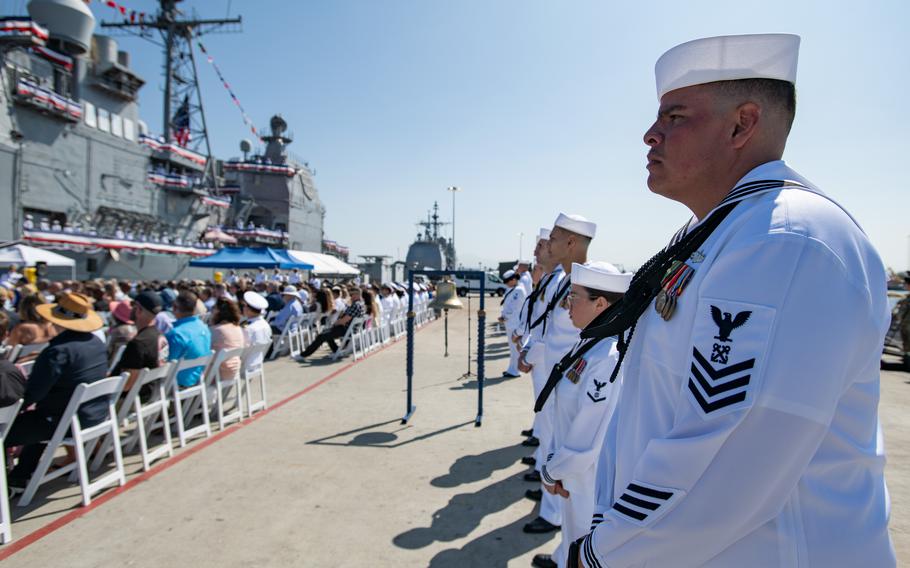
Sailors assigned to the Ticonderoga-class guided-missile cruiser USS Cowpens (CG 63) participate in the ship’s decommissioning ceremony at Naval Base San Diego on Aug. 27, 2024. (Claire M. DuBois/U.S. Navy)
Ticonderoga-class guided-missile cruiser USS Cowpens (CG 63), a ship that helped establish the Tomahawk cruise missile as one of the military’s most feared weapons, was retired Tuesday at Naval Base San Diego .
Hundreds gathered at the decommissioning to celebrate the ship’s 33 years of service.
“A guiding principle in the last chapter onboard, has been to honor the legacy of Cowpens,” said Cmdr. Jac O. Ullman III, the ship’s commanding officer.
The move is part of an effort to decommission all remaining Ticonderoga-class guided-missile cruisers before the end of the decade. The Navy built 27 of the ships from 1980 through 1994 to counter the Soviet Union during the Cold War. Thirteen are still in service. The class is being replaced by Arleigh Burke-class destroyers.
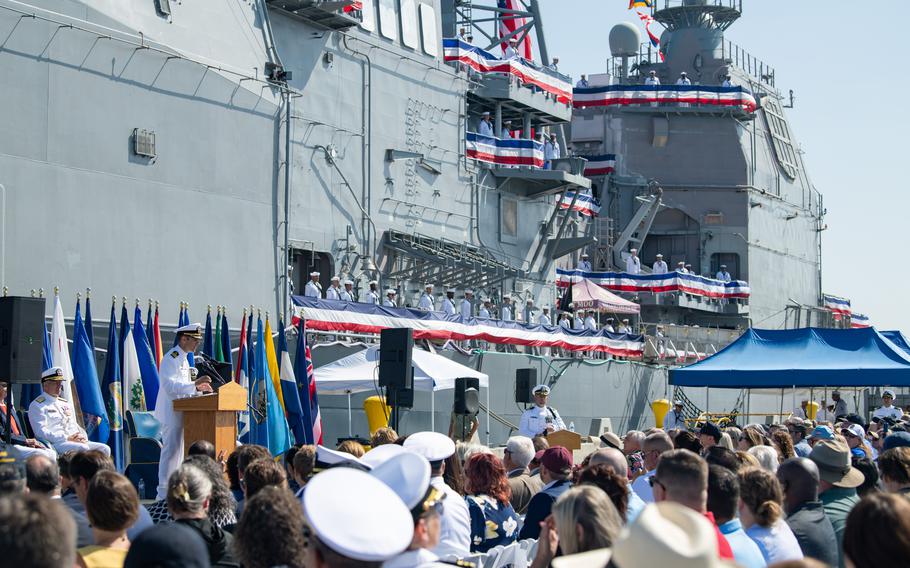
Cmdr. Jac Ullman III, commanding officer of the Ticonderoga-class guided-missile cruiser USS Cowpens (CG 63), delivers opening remarks at the ship’s decommissioning ceremony at Naval Base San Diego on Aug. 27, 2024. (Claire M. DuBois/U.S. Navy)
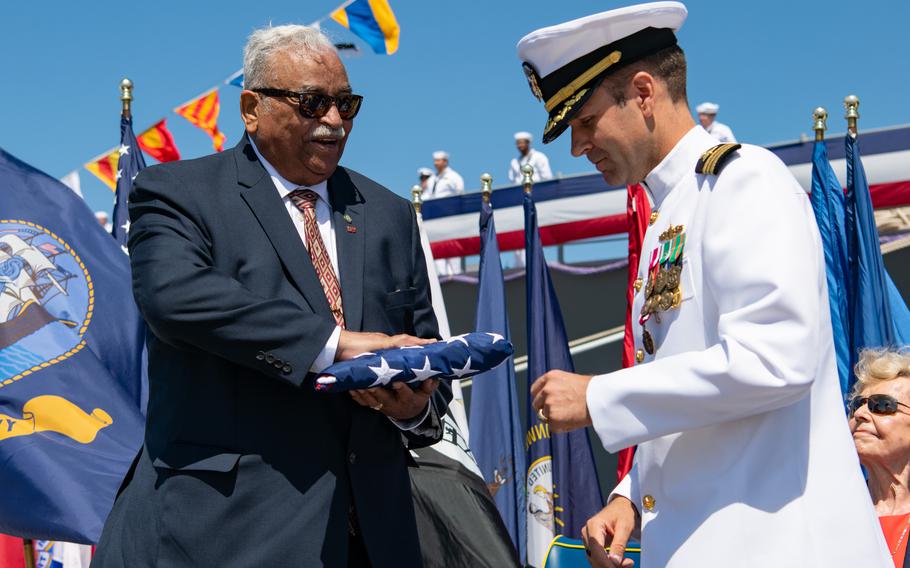
Cmdr. Jac O. Ullman III, commanding officer of the Ticonderoga-class guided-missile cruiser USS Cowpens (CG 63), right, presents an American Flag representing the ship’s Ensign to retired Vice Adm. Edward Moore during the ship’s decommissioning ceremony at Naval Base San Diego on Aug. 27, 2024. (Claire M. DuBois/U.S. Navy)
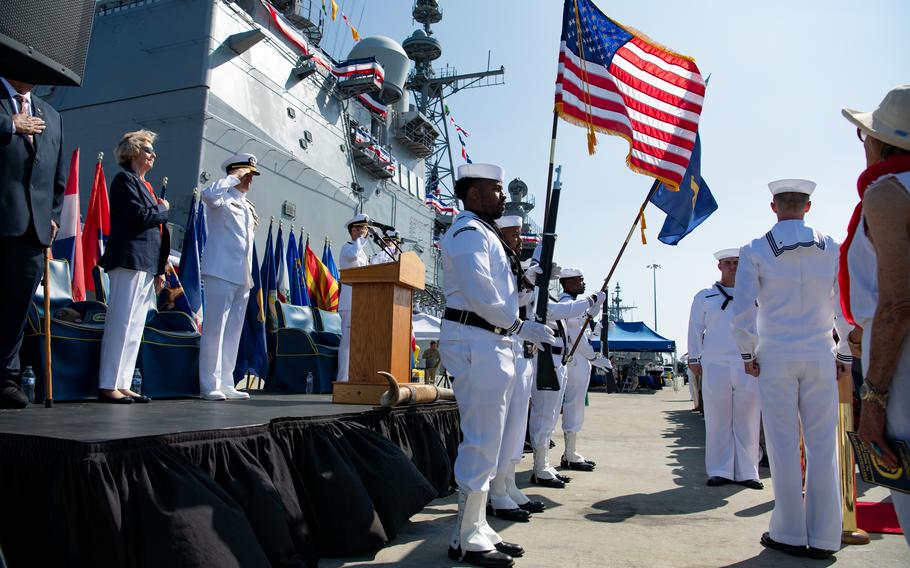
Sailors and guests render honors to the national Ensign at the decommissioning ceremony for the Ticonderoga-class guided-missile cruiser USS Cowpens (CG 63) at Naval Base San Diego on Aug. 27, 2024. (Claire M. DuBois/U.S. Navy)
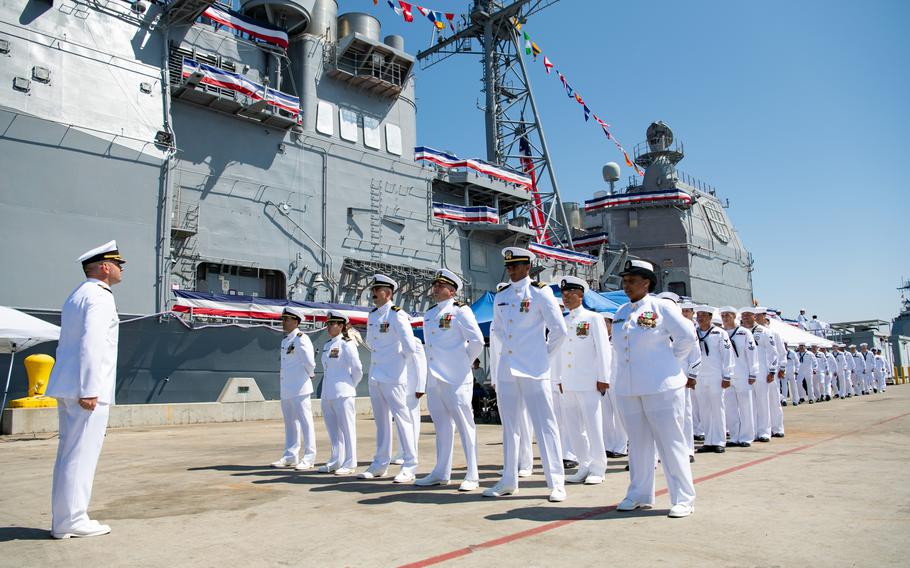
Cmdr. Timothy Barry, executive officer of the Ticonderoga-class guided-missile cruiser USS Cowpens (CG 63), left, watches as its crew leaves the ship during its decommissioning ceremony at Naval Base San Diego on Aug. 27, 2024. (Claire M. DuBois/U.S. Navy)
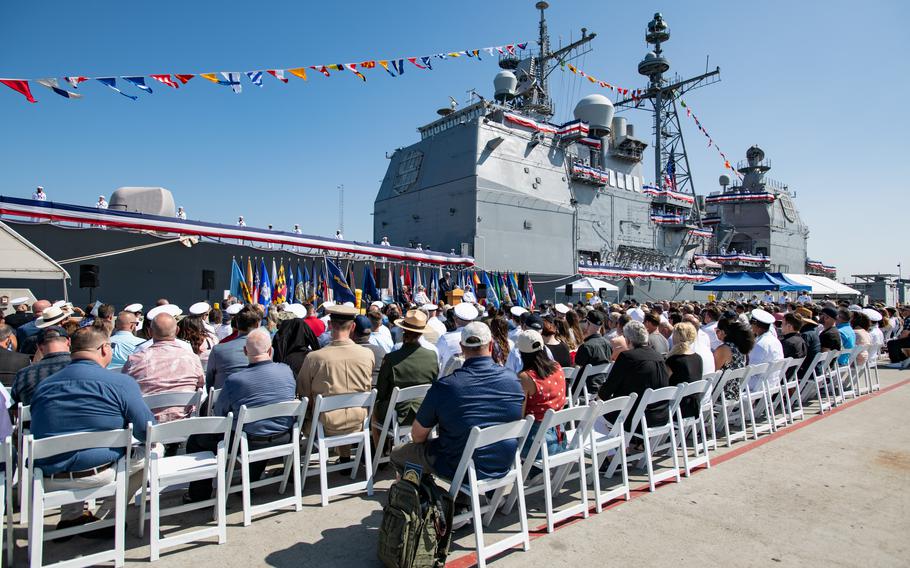
Retired Vice Adm. Edward Moore delivers remarks at the decommissioning ceremony for the Ticonderoga-class guided-missile cruiser USS Cowpens (CG 63) at Naval Base San Diego on Aug. 27, 2024. (Claire M. DuBois/U.S. Navy)
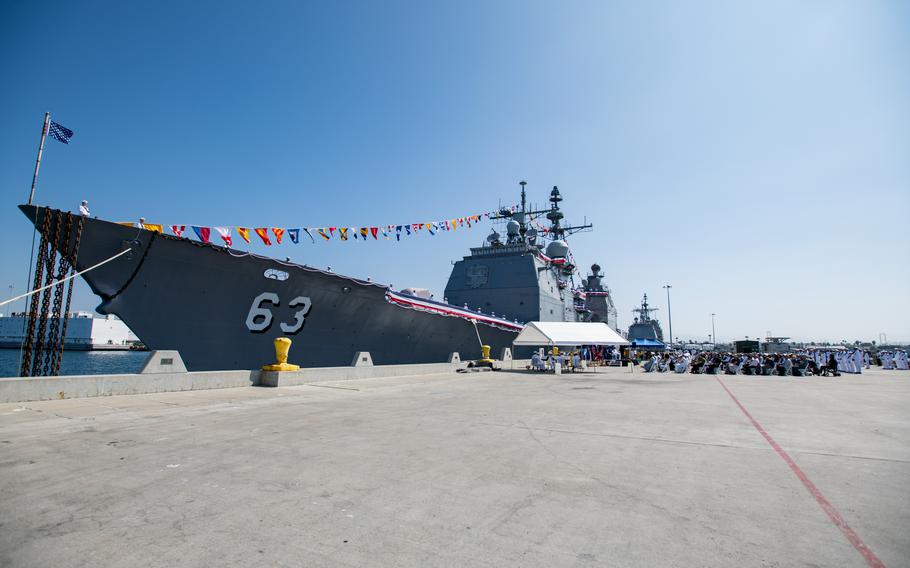
The Cowpens was launched in March 1989 in Charleston, S.C. It is the second warship to be named after the Battle of Cowpens, a Revolutionary War battle in which colonial soldiers defeated British troops near Chesnee, S.C. Historians say the fight occurred close to pastures known as cow pens.
The latter warship is affectionately known as the Mighty Moo and its crews as the Thundering Herd.
“To honor the grit, determination, and creativity of the Continental Army and militiamen from that cold battlefield,” Ullman said. “To honor the service of those on the first USS Cowpens — CVL 25 — and to honor the legacy of those who served before us during Mighty Moo’s 33-year career. … We have done just that.”
The Cowpens was commissioned in March 1991. Less that two years later, the ship fired 10 Tomahawk cruise missiles into Iraq , which had violated no-fly zone sanctions in the region. The volley was part of a major strike by coalition forces. In March 2003, as part of the USS Kitty Hawk battle group, it was the first warship to launch Tomahawk missiles into Iraq, marking the start of Operation Iraqi Freedom — the campaign that brought down Saddam Hussein.
USS Cowpens participated in many operations and exercises, contributing significantly to U.S. naval power projection and security. From enforcing no-fly zones to conducting maritime security operations, the ship demonstrated versatility and capability across a range of mission profiles.
Contributing: The San Diego Union-Tribune (TNS).

USS Cowpens (CG 63), foreground, is followed by USS Lassen (DDG 82), USS John S. McCain (DDG 56), USS Vandegrift (FFG 48) and USNS Tippecanoe (T-AO 199) during a photo exercise to kick off Exercise Valiant Shield 2006 in the Pacific Ocean on Sunday June 18, 2006. (U.S. Navy)
USS Cowpens sailors stand watch in front of the vertical launching system in March 2003. (Kendra Helmer/Stars and Stripes)

Ensign George Bick, 25, gives a thumbs-up from the helicopter control tower on the USS Cowpens as a helicopter makes a brief stop on the guided missile cruiser in the northern Persian Gulf in March 2003. (Kendra Helmer/Stars and Stripes)
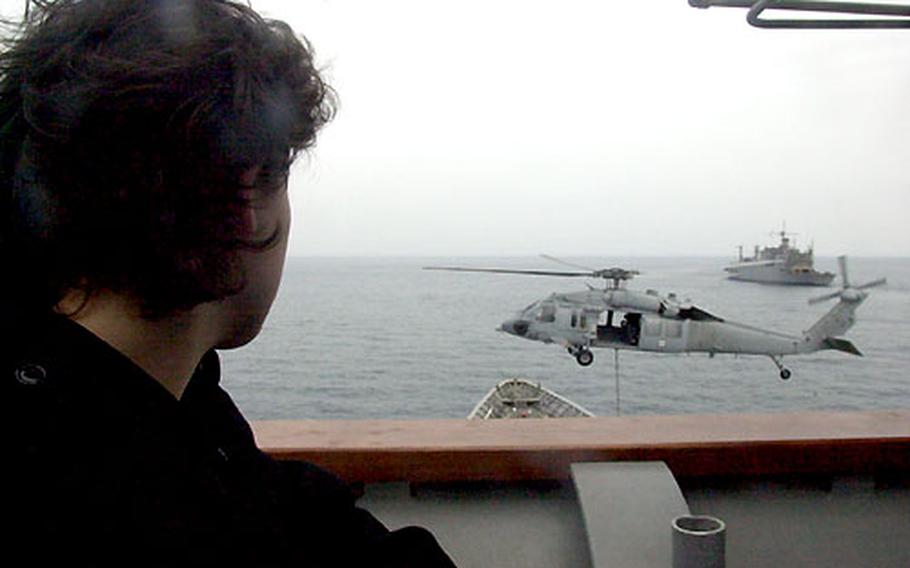
From the bridge of the USS Cowpens, Ensign Rebecca Farley, an engineering training officer, watches a helicopter drop off ammunition from the USNS Flint (background) in March 2003. (Kendra Helmer/Stars and Stripes)

Sailors of the USS Cowpens wave as they return to Yokosuka Naval Base in May 2003. The USS returned Tuesday with the USS Kitty Hawk and USS John S. McCain from their deployment to the Persian Gulf. (Jim Schulz/Stars and Stripes)
related stories
- USS Antietam arrives at new homeport in Hawaii
- USS Bunker Hill, one of the Navy’s last Cold War-era cruisers, is decommissioned in San Diego
Sign Up for Daily Headlines
Sign up to receive a daily email of today's top military news stories from Stars and Stripes and top news outlets from around the world.
Sign Up Now
The US Navy's Submarine Fleet Is Bigger Than You Think
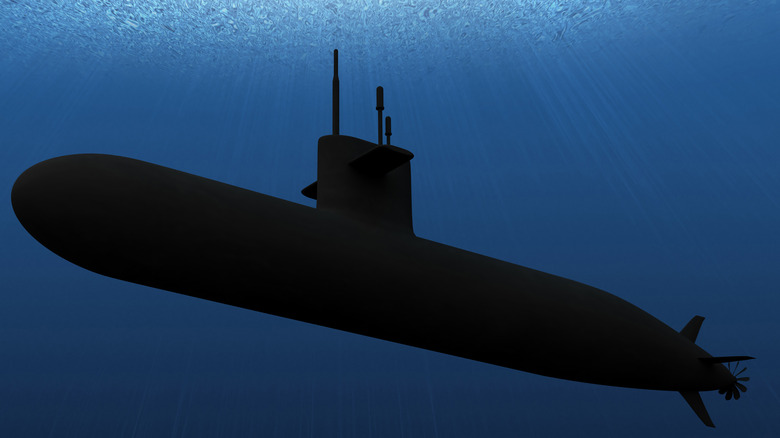
Thanks to movies like "Crimson Tide," when most people think of the United States Navy's submarine force, they remember the Ohio-class submarines. While Ohio-class subs make up a portion of the submarine force, they're hardly the most used subs in the service. There are currently four classes of submarines in the Navy, and they vary in function, from fast attack to various types of missile submarines.
The U.S. Navy's submarine force currently consists of 71 submarines. These days, all of the United States' submarines are nuclear-powered, having stopped using diesel-powered subs with the retirement of the USS Dolphin (AGSS-555) in 2007. This makes it possible for a sub to operate for as long as needed, and they only need to return to port to add provisions or transfer personnel, and means that a U.S. submarine can stay submerged for months at a time.
In terms of missions, the various submarines that make up the fleet undertake a variety of operations. Some remain hidden beneath the waves to be used in the event of nuclear war, while others patrol the world's oceans, looking for potential targets while ideally remaining undetected. The 71 submarines in the fleet are operated by thousands of submariners, and every one of them serves a vital function in the U.S. military's global operations. These are the boats upon which they serve.
Los Angeles-class fast attack submarines
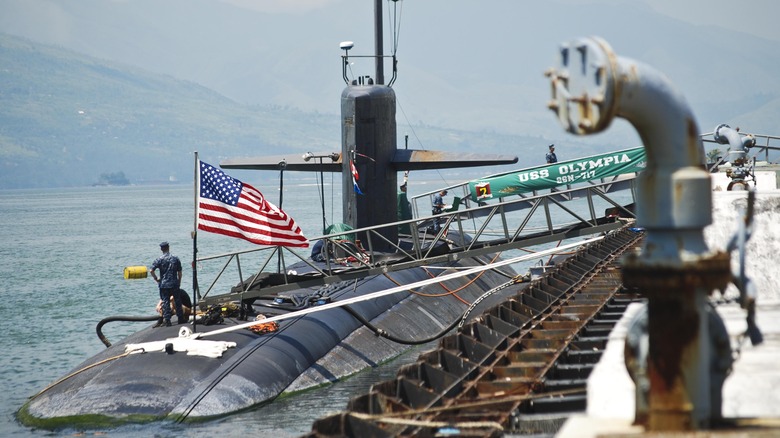
The U.S. Navy's fleet of Los Angeles-class fast attack submarines (SSN) has been the backbone of the submarine fleet for decades. The now decommissioned USS Los Angeles (SSN-688), the first of its kind, was commissioned in 1976, and over the life of the program, the Navy operated 62, though only 25 remain in service. They make up more than half of the fast attack submarine fleet, and each one is named after an American city.
Los Angeles-class submarines are powered by a nuclear reactor that propels the vessel to a maximum speed of 25 knots (29 mph). They require refueling after around 10 years and are manned by 16 officers and 127 enlisted personnel. In terms of armaments, each sub features four 21-inch torpedo tubes, Tomahawk land attack missiles, Harpoon anti-ship missiles, and a complement of deep-water anti-submarine mines. Like other Navy vessels, Los Angeles-class subs have undergone massive refits and redesigns for modernization.
Upgraded models feature 12 vertical launching system tubes to fire Tomahawk missiles at targets up to 1,500 miles, so the subs are deadly on both land and sea. Los Angeles-class submarines were built for one purpose: to counter the threat posed by the Soviet Union. While the threat never fully manifested, Los Angeles-class submarines have taken part in U.S. military operations around the globe. Due to their age, the Navy is actively replacing its aged fleet of Los Angeles-class subs with newer Virginia-class submarines.
Ohio-class ballistic missile and guided missile submarines
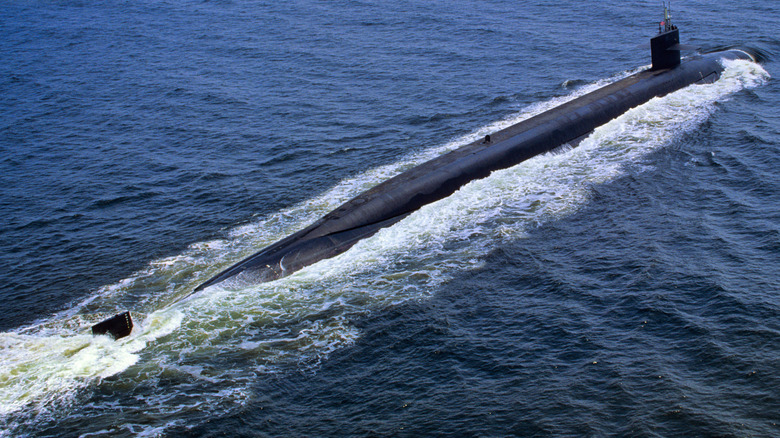
The Ohio-class submarine is one of the most important in the fleet, as it's responsible for delivering nuclear missiles to targets anywhere in the world. Hopefully, that will never happen, but having Ohio-class submarines as part of the Nuclear Triad and a deterrent to outside aggression makes them the best unused weapons in the U.S. arsenal . The Navy initially planned for 24 vessels but stopped with 18, all of which remain in service.
Of the 18 Ohio-class submarines, 14 carry 24 Trident II intercontinental ballistic missiles (ICBM). Each missile is capable of carrying up to eight nuclear warheads of varying yields with a range of up to 7,100 miles, though various sources note different ranges. The USS Ohio (SSGN-726) was the first to be commissioned in November 1981, and it remains active to this day. There are two types of Ohio-class submarines based on their configuration. There are 14 guided-missile submarines (SSBN) that carry nuclear weapons, and four ballistic missile submarines (SSGN).
The Navy's fleet of SSGNs is configured to carry cruise missiles instead of ICBMs. Each sub carries 154 Tomahawk land-attack cruise missiles, and 22 are loaded into the sub's launch tubes for immediate use whenever necessary. Technically, SSGNs are still capable of carrying and firing ICBMs, but they aren't utilized for that purpose. Instead, they function as land-attack platforms with an extensive stand-off distance, making them lethal while remaining safe at sea.
Seawolf-class fast attack submarines
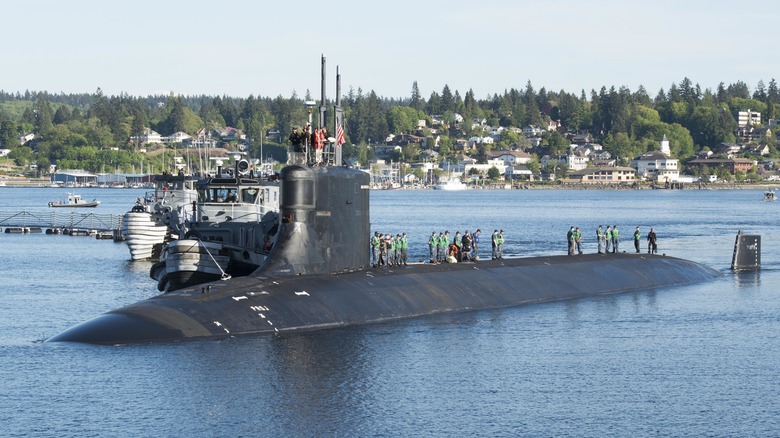
The Seawolf-class submarine fleet is the smallest in the Navy's inventory, with only three boats having been built. Initially, 29 were ordered, but the Navy canceled the program due to the end of the Cold War. All three remain active fast attack submarines (SSN) operating in the world's oceans today. The USS Seawolf (SSN-21) was commissioned in July 1997 and was assigned to the U.S. Atlantic Fleet.
Seawolf-class submarines are fast, achieving a maximum speed of 35 knots (40 mph), so they're not called "fast attack submarines" for nothing. Each sub is outfitted with a nuclear reactor, and they're manned by 14 officers and 126 enlisted personnel. Seawolf-class subs may not have gone into mass production, but they changed submarine warfare via their speed and stealth. In terms of armaments, each sub features eight 26" torpedo tubes, Tomahawk land attack missiles, anti-ship missiles, and guided torpedoes.
One of the three Seawolf-class submarines, the USS Jimmy Carter (SSN-23), is unlike the others. The Carter is around 100 feet longer than its sister boats, allowing for the insertion of the Multi-Mission Platform. This enables the sub to launch remotely operated underwater vehicles (ROV) operated by Navy SEALs on clandestine missions. The modification cost $887 million and likely made it possible for the Carter to tap undersea fiber optic cables, making it the only vessel capable of doing so.
Virginia-class fast attack submarines
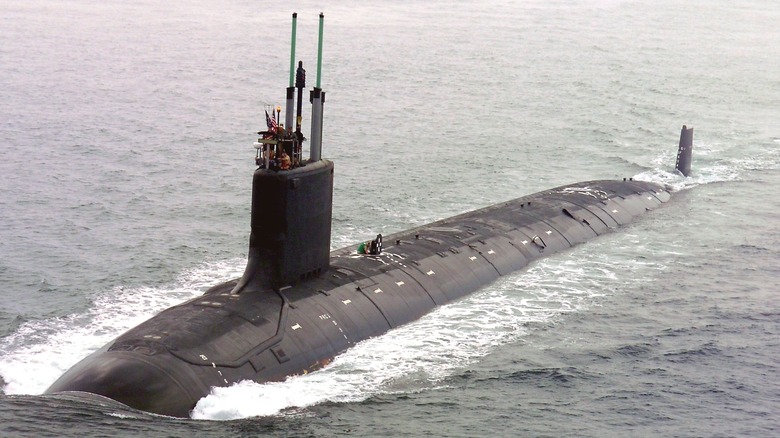
The Virginia-class fast attack submarine is the newest model in the Navy's undersea fleet. Virginia-class boats were designed to be smaller and faster than their predecessors, which they're actively replacing in the inventory. As of mid-2024, 22 Virginia-class submarines have entered into active service. The Navy has more on the way, with ten under construction and an additional four on order. Once they enter service, Virginia-class submarines will make up the bulk of the Navy's submarine fleet.
The USS Virginia (SSN-774) was commissioned in October 2004, and the Virginia class became the most technologically advanced ever constructed . Virginia-class subs move through the water at over 25 knots (28.7 mph), powered by its nuclear reactor. The boat's complement consists of 15 officers and 120 enlisted personnel. There are five blocks with varying armaments, with the newest, Block V, featuring 12 tubes for Tomahawk cruise missiles and four 21" torpedo tubes, planned for future boats.
In total, a Virginia-class submarine can carry between 25 and 65 torpedoes and missiles, each of which makes the vessel incredibly lethal in undersea warfare. Virginia-class submarines' nuclear reactors output a ton of energy (30 megawatts), and future plans may incorporate the addition of a high-energy laser weapon on the periscope mast capable of emitting a beam powered to 300-500 kilowatts. Should this be incorporated, the laser will likely function as a defense against aircraft, though it's unclear when — or if — this will happen.
[Featured image by U.S. Navy via Wikimedia Commons | Cropped and scaled | Public Domain ]
Recommended
- svg]:fill-accent-900">
New ‘Cheap’ Cruise Missile Concept Flight Tested By Silicon Valley-Backed Start-Up
By Joseph Trevithick
Posted on Aug 21, 2024 2:07 PM EDT
10 minute read
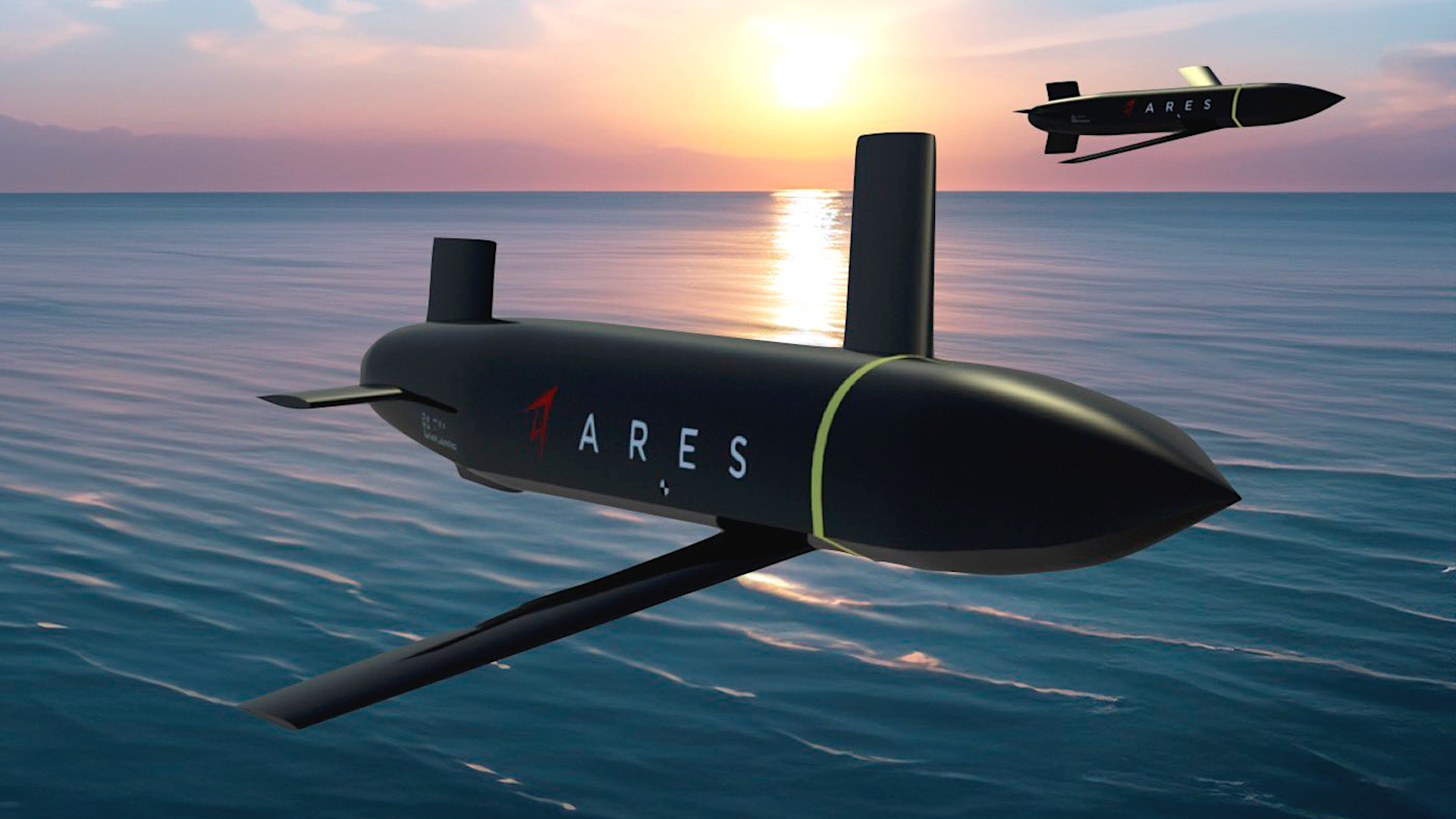
Ares Industries
Ares Industries, a new U.S. defense start-up, says it began flight testing of a compact and relatively low-cost anti-ship cruise missile concept within 11 weeks of its founding. This comes amid a new surge in interest in cheaper stand-off munitions within the U.S. military as it shifts its focus to preparing for conflicts with high-end fights, especially one against China in the Pacific , that could require massive expenditure of munitions. A growing consensus is also emerging within America’s armed forces that large established prime contractors will not be able to meet these demands alone and that more attention should be given to what smaller firms have to offer .
Ares announced its flight test and otherwise laid out its company vision in a press release yesterday . The news came via the powerful technology incubator Y Combinator , which is backing the start-up in its first-ever foray into the weapons sector. Founded in 2005, Y Combinator has become a Silicon Valley institution , having raised hundreds of billions of dollars over the years to help launch thousands of companies , including Airbnb, DoorDash, and Reddit.
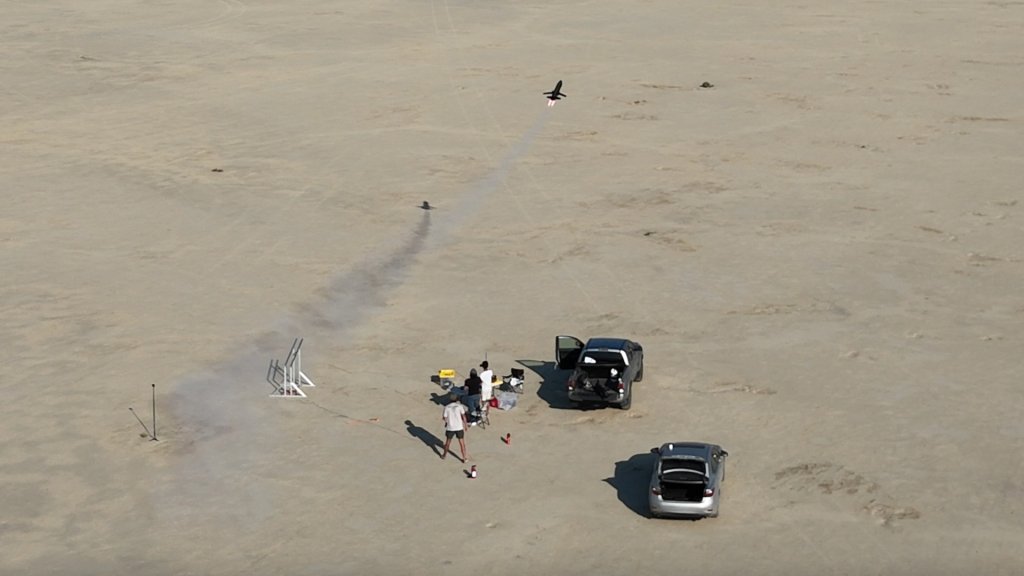
“Ares is building a new class of anti-ship cruise missiles. We are going to deliver the capabilities that the DoD wants in a form factor that’s 10x smaller and 10x cheaper,” according to the release. “Our missiles will be compatible with existing launch platforms, deliver smaller payloads at high subsonic speeds, and take out ships hundreds of miles away. We’re focusing on ground and ship-launched variants to start but will expand into air-launched versions, as well as versions with extended ranges and different payloads.”
“We spent the summer building multiple prototypes and flight-testing them in the Mojave,” the release adds. “In 11 weeks, we went from starting the company to flight testing with our own design.”
Ares Industries, which builds cruise missiles, launched today out of YC’s current batch. This is YC's first weapons company, and this is an actual photo of their missile. Here is the story of Ares Industries and why we funded them. (1/10) pic.twitter.com/n8KR4bFaaN — Jared Friedman (@snowmaker) August 21, 2024
Details about that flight test and how much the design in question reflects the expected final product are unclear. A rendering the company has put out, seen at the top of this story and below, shows a stealthy-looking munition with a notable chine line that wraps around the front end, as well as pop-out main wings and tail fins. The design’s overall form has some very broad similarities to existing cruise missiles and other similar “air vehicles,” including Lockheed Martin’s air-launched Speed Racer drone .
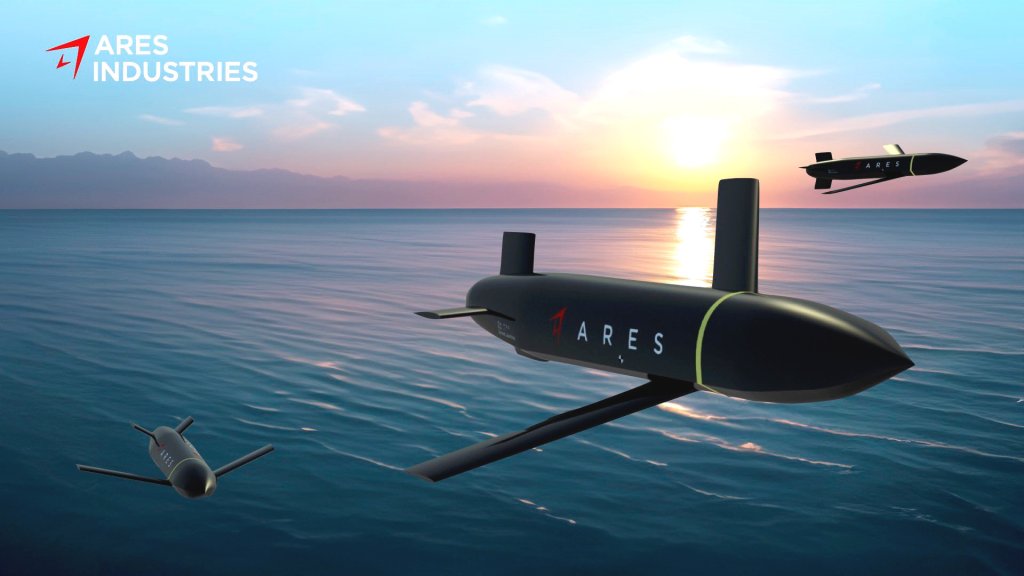
Ares does not yet appear to have released any hard specifications, current or planned, but says that it is targeting a $300,000 unit cost for its missiles. The company has also drawn a comparison between this goal and current anti-ship cruise missiles that cost around $3 million apiece, which appears to be a reference to Lockheed Martin’s AGM-158C Long Range Anti-Ship Missile (LRASM).
The AGM-158C is currently only in U.S. service in an air-launched configuration, but has also been successfully test-fired from a warship using the Mk 41 Vertical Launch System (VLS). The U.S. military’s current anti-ship cruise missile inventory also includes Tomahawks (including forthcoming types further optimized for the ship-killing role ), Naval Strike Missiles , and Harpoons , but these also all cost between $1 million and $2 million each. The video below from The War Zone ‘s YouTube channel explores these and other naval missile costs in more detail.
Ares’ release also says it is “on track to deliver early working missile systems to our first customers by mid-2025,” but does not elaborate.
The War Zone has reached out for more information about Ares’ work.
“A war with China in the Taiwan Strait would look nothing like what we’ve seen in Ukraine or the Middle East. Wargames within DoD and military experts are in agreement that the most useful weapons in such a conflict would be long-range anti-ship weapons or cruise missiles,” Ares notes in a section titled “Why we’re doing this” in yesterday’s press release. “The United States is not adequately prepared. In a potential conflict, our stockpiles will run out in weeks, and we currently don’t have the industrial capacity to build at a rate that could win a war, much less deter China.”
“When the US invaded Iraq in 2003, we launched 800 Tomahawks,” Jared Friedman, a partner at Y Combinator, wrote separately in a series of posts about Ares on X yesterday. “At today’s production rate, that would take us a decade to replenish.”
The other problem is that anti-ship missiles only come in one size: big. These missiles were designed to blow up huge destroyers but the frigates in the Chinese Navy are much smaller. And now we have drone ships! It makes no sense to take out a $200K drone ship with a $3M… — Jared Friedman (@snowmaker) August 21, 2024
U.S. military operations to protect commercial shipping and friendly warships in and around the Red Sea since October 2023, as well as the defense of Israel against Iran’s missile and drone strikes in April , have given new emphasis to concerns about munitions expenditure rates and the industrial capacity to replenish those stockpiles . The ships assigned to the Dwight D. Eisenhower Carrier Strike Group notably fired 153 Tomahawks while operating around the Red Sea between November 2023 and June 2024. At the same time, the Navy only has plans to buy 181 of those missiles over the next five years, according to its proposed budget for the upcoming 2025 fiscal cycle.
Furthermore, “recent conflicts in the Middle East and Ukraine have shown that our weapons are too large, too expensive for the wars of today. Existing anti-ship cruise missiles are low-volume, multi-million dollar, 3,000 lb behemoths meant to take out large cruisers and destroyers,” Ares release continues. “But Chinese shipbuilding capability is far superior to ours, and we can’t make enough anti-ship missiles to counter. In addition, huge missiles aren’t needed to take out the smaller corvettes and frigates that make up the People’s Liberation Army Navy. And $3M missiles make even less sense to take out swarms of $200k small, unmanned surface vessels.”
The War Zone has previously explored in detail the worrying disparity between U.S. and Chinese shipbuilding capacity , as well as the game-changing impact that swarms of uncrewed systems in the air and down below are likely to have on both sides of any future Taiwan crisis. U.S. officials have now publicly said that a key component of plans to help defend the island from an invasion from the mainland revolves around creating a “hellscape” for Chinese forces full of uncrewed aerial systems, boats, and underwater vehicles, as you can read more about here .
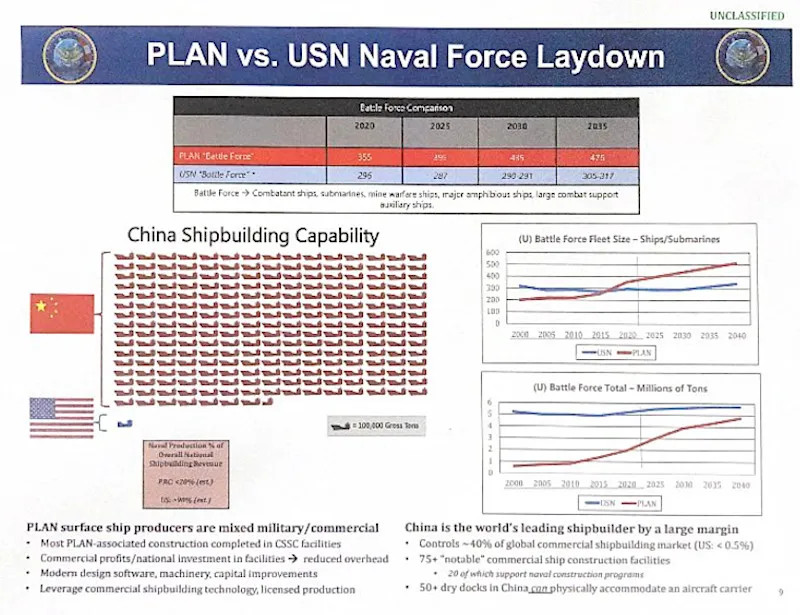
Not highlighted in Ares’ release are the ever-growing anti-access and area denial threats U.S. forces will face in any future high-end conflict against a neer-pear competitor, especially one against China in the Pacific. This, in turn, has been driving additional demand for new and improved stand-off strike capabilities like cruise missiles, and more of them. When it comes to air-launched munitions, specifically, interest has also grown in more compact designs that can fit inside internal weapons bays on stealthy aircraft , giving them improved strike capabilities and capacity while still being able to fly in the more low-observable configurations.
In any high-end fight against the People’s Liberation Army, the U.S. military could expect to be tasked with prosecuting tens of thousands of targets across a broad area. At the same time, not all of those targets would require the use of higher-end munitions like LRASM or the members of the AGM-158 Joint Air-to-Surface Standoff Missile (JASSM) family of land-attack cruise missiles from which it is derived.
The U.S. military is not unaware of these issues and multiple branches have been actively exploring new lower-cost cruise missile concepts and related technology developments for years now in response to this reality. Just in June, the Pentagon’s Defense Innovation Unit (DIU), in cooperation with the U.S. Air Force, announced that it had picked four companies to build and demonstrate so-called “Enterprise Test Vehicles” (ETV) that could be stepping stones to cheaper cruise missiles, as well as lower-cost platforms for launching electronic warfare attacks or to act as decoys. Since then, the ETV effort has also emerged as a prime example of how America’s armed forces are also looking to push beyond traditional defense companies to meet its demands not just for new munitions designs, but also the capacity to build those weapons in useful numbers.
A key component of the ETV project is exploring ways “to expand our industrial base into non-traditional suppliers that perhaps have not historically been large-scale munitions producers,” Vice Chief of Staff of the U.S. Air Force Gen. James Slife explained during a virtual talk that the Air & Space Forces Association’s Mitchell Institute for Aerospace Studies hosted in July. “If the manufacturing techniques we’re able to leverage pan out we’ll be able to take advantage of a bigger part of the American industrial base to produce munitions for us.”
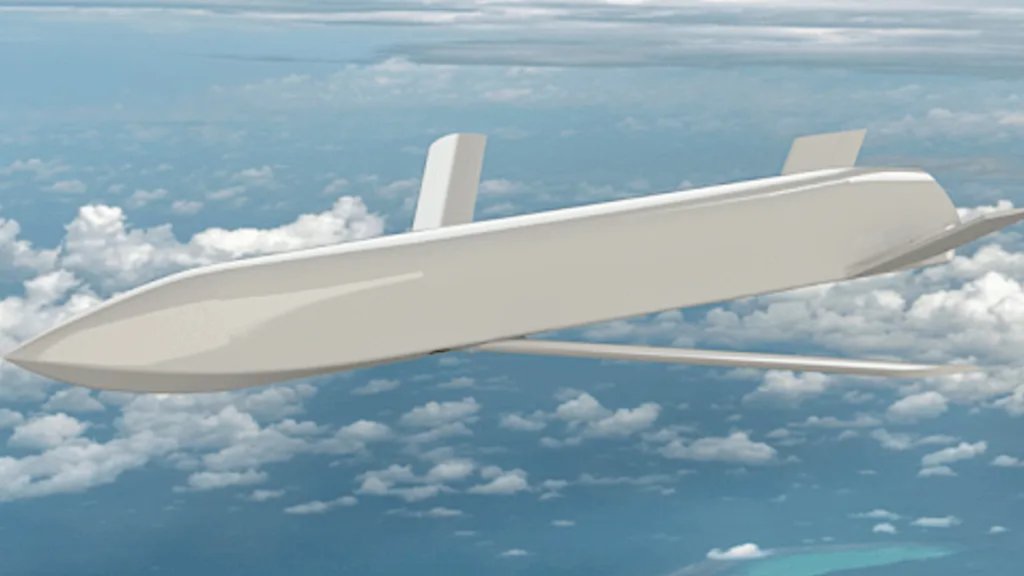
At another Mitchell Institute event in July, Tim Grayson, Special Assistant to Secretary of the Air Force Frank Kendall, disclosed that the Air Force is now working on a new Affordable Mass Munition concept, which sounds similar in many respects to the ETV effort.
“People… were thinking about how we do a better job of applying digital engineering and said you know, ‘if we built a software programmable, modular, but recoverable air vehicle that looks a lot like a missile and flies over most of the missile envelope that could greatly accelerate how we do test[ing],” Grayson said. “And it was sort of like chocolate and peanut butter coming together. …this modular thing for testing purposes, it’s very adaptable, one of the modules is a warhead, sure looks like a low-cost cruise missile.”
New, lower-cost, longer-range strike capabilities to engage threats at sea and on land are of growing interest to the U.S. Navy , the U.S. Marine Corps , and the U.S. Army , as well.
In addition, the need to not just accelerate the development of new munitions and other weapon systems, but also their production, all while keeping costs as low as possible, is becoming a more common topic of discussion across the Department of Defense. Currently, it can take years to go from a contract award to the production and delivery of higher-end weapons due to factors like needing to order system-specific high-tech parts.
In addition to cruise missile programs, this has been particularly apparent in relation to uncrewed systems. The Pentagon’s Replicator initiative , which has a goal of helping America’s armed forces field thousands of uncrewed systems with autonomous capabilities in 2025, is a prime example of this growing trend.
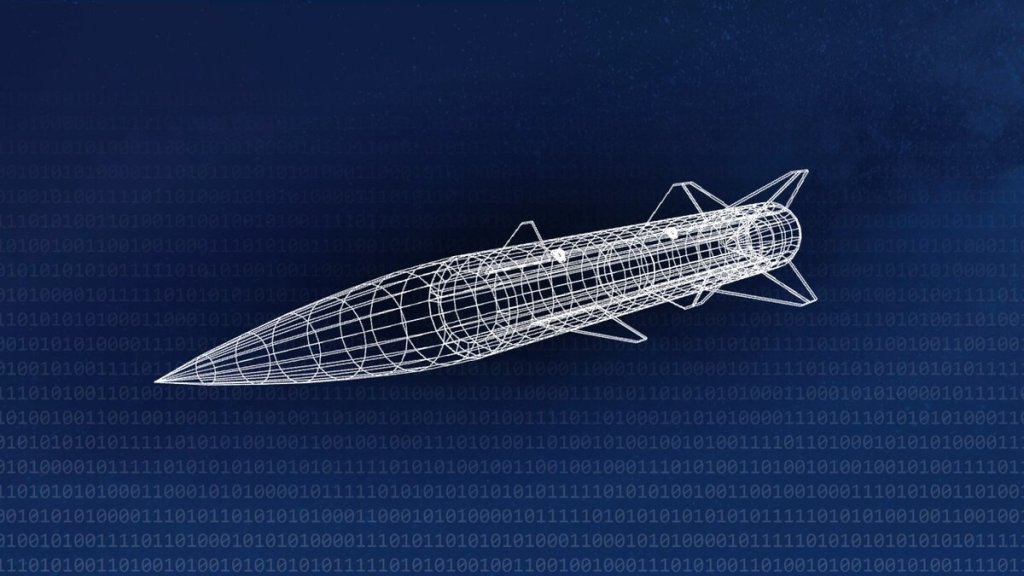
Helping to support foreign partners faced with similar demands for affordable stand-off strike capacity, as well as leveraging industrial capacity in those countries to help meet U.S. needs, are part of this equation, too. It emerged in July that the Air Force’s Extended Range Attack Munition (ERAM) effort is focused primarily on delivering that capability – a precision air-launched 500-pound-class weapon with a projected range of around 250 miles – to Ukraine .
Defense contractors, large and small, are clearly taking note. Anduril, which has become something of a poster child for new entrants into the U.S. defense sector, unveiled plans for a novel “hyperscale” production facility and accompanying manifesto about its vision for the future when it comes to affordable and scalable manufacturing earlier this month, as you can learn more about here .
“More More More Production” poster Anduril Industries, 2024 pic.twitter.com/daf2OIkx27 — Anduril Industries (@anduriltech) August 20, 2024
Much remains to be learned about Ares Industries’ new cruise missile and the company’s broader plans. At the same time, it reflects a clear and still growing demand signal from the U.S. military for new lower-cost stand-off strike capacities, as well as interest in expanding the available industrial base to produce those munitions at scale.
Together with the backing from Y Combinator, Ares’ arrival on the scene looks to be a sign of broader things to come in the U.S. defense sector.
Contact the author: [email protected]
Latest in Air-To-Ground
Jassm stealth cruise missiles now on the table for ukraine: report jassm stealth cruise missiles now on the table for ukraine: report.
AGM-158 JASSM would be Ukraine’s most advanced and survivable long-range strike weapon yet.
Best Look Yet At Ukrainian MiG-29 Releasing Hammer Rocket-Assisted Bombs Best Look Yet At Ukrainian MiG-29 Releasing Hammer Rocket-Assisted Bombs
The video shows a now deceased Ukrainian MiG-29 pilot executing a toss release of the French-made weapons.
SIGN UP FOR OUR NEWSLETTERS
Sign up to receive our newsletter every week.
By signing up you agree to our Terms of Service and Privacy Policy.

IMAGES
VIDEO
COMMENTS
BGM-109A Tomahawk Land Attack Missile - Nuclear (TLAM-N) with a W80 nuclear warhead. Retired from service sometime between 2010 and 2013. [7] Reports from early 2018 state that the U.S. Navy is considering reintroducing a (yet unknown type of) nuclear-armed cruise missile into service. [18]
The West has been frustrated since 2012 over Russia's decision to violate the 1987 Intermediate-Range Nuclear Forces (INF) Treaty by testing a new ground-launched cruise missile. The treaty, which eliminated nearly 2,700 missiles on both sides, prohibits production or flight test of any such missiles with a range between 500 and 5,500 ...
W80 Mod 4 warhead for the LRSO program. The W80 is a low to intermediate yield two-stage thermonuclear warhead deployed by the U.S. enduring stockpile with a variable yield ("dial-a-yield") of 5 or 150 kilotonnes of TNT (21 or 628 TJ). It was designed for deployment on cruise missiles and is the warhead used in all nuclear-armed ALCM and ACM ...
The UGM-109A Tomahawk (Block II TLAM-A) carries a W80 nuclear warhead. RGM / UGM-109C (Block III TLAM-C) is a conventional unitary variant, carrying a 1,000lb-class warhead. ... The US Navy will use the upgraded Tomahawk cruise missiles beyond 2040. Raytheon was contracted to integrate the upgraded navigation and communication systems into the ...
The Tomahawk is an intermediate-range, subsonic cruise missile that is launched from U.S. Navy ships and submarines. It provides a long-range, deep strike capability. The Tomahawk can carry either conventional or nuclear payloads, though policy decisions have phased out their nuclear role. Tomahawk Development The U.S. Navy began its development of sea-launched cruise missiles in 1972. The...
The Tomahawk Land Attack Missile (TLAM) is an all-weather, long range, subsonic cruise missile used for deep land attack warfare, launched from U. S. Navy surface ships and U.S. Navy and United
Submarine-launched Tomahawk missiles entered service in 1983 with conventional (i.e., nonnuclear) land-attack and antiship missile variants, as well as with a land-attack missile carrying a nuclear warhead.The nuclear variant has since been retired, and a land-attack cluster-bomb variant that disperses bomblets has been added.
The Tomahawk Land Attack Missile (TLAM) is a long-range, all-weather, subsonic cruise missile that is primarily used by the United States Navy and Royal Navy in ship and submarine-based land-attack operations. Introduced by General Dynamics in the 1970s, it was initially designed as a medium- to long-range, low-altitude missile that could be ...
The U.S. Navy is set to upgrade its stock of Tomahawk cruise missiles to a new Block V standard. The new missiles can attack enemy ships at sea or land targets with a new multi-effect warhead. The ...
The U.S. Navy first deployed a nuclear-armed sea-launched cruise missile in the mid-1980s, when it placed the TLAM-N—a nuclear-armed version of the Tomahawk land-attack cruise missile—on surface ships and attack submarines. With a range of 2,500 kilometers (about 1,550 miles), the missiles were not included in the limits in U.S.-Soviet arms
A Tomahawk Block IV cruise missile is launched from the USS Stethem (DDG-63). ... Also in 1991, nuclear-warhead variants were withdrawn from service and placed into storage. In 1995, the governments of the U.S. and the U.K. signed an agreement for the acquisition of 65 missiles - the first sale of Tomahawk to a foreign country. ...
BGM-109G on display at the National Museum of US Air Force. GLCM was developed as a ground-launched variant of the Tomahawk cruise missile in use by the U.S. Navy (along with an undeveloped air-launched version, the Medium Range Air to Surface Missile (MRASM)). Unlike other variants of the Tomahawk, the GLCM carried only a W84 thermonuclear ...
The Tomahawk is primarily made by Raytheon Missile Systems. According to budget data from the United States Marine Corps from 2022, each Tomahawk costs around $2 million. As of now, the United ...
A BGM-109 Tomahawk cruise missile, armed with a live 1,000 pound Bullpup conventional warhead, detonates and explodes its target, a warehouse-size concrete and steel structure with 7,000-pound concrete roof panels. The missile was launched from a submerged submarine underway off the coast of Southern California and has flown more than 400 miles ...
The U.S. Navy first deployed a nuclear-armed sea-launched cruise missile in the mid-1980s, when it placed the TLAM-N—a nuclear-armed version of the Tomahawk land-attack cruise missile—on ...
Tomahawk. The Tomahawk Land Attack Missile (TLAM) is a long range cruise missile used for deep land attack warfare, launched from U. S. Navy surface ships and U.S. Navy and United Kingdom Royal Navy submarines. The Tomahawk Block III Conventional variant (TLAM-C) contains a 1,000-lb class blast/fragmentary unitary warhead while the Submunition ...
The U.S. Nuclear Weapons Council has selected the W80-1 thermonuclear warhead for the Air Force's new nuclear cruise missile (Long-Range Standoff, LRSO) scheduled for deployment in 2027. The W80-1 warhead is currently used on the Air Launched Cruise Missile (ALCM), but will be modified during a life-extension program and de-deployed with a new name: W80-4. […]
As of 2022, the U.S. Navy had a stockpile of 4,000 Tomahawk Land Attack Missiles (TLAMs)—long range cruise missiles fired from surface ships and submarines. Open-source estimates indicate that the U.S. also has roughly 1,900 nuclear warheads kept in reserve. The United States could therefore constitute a SLCM-N capability by modifying a ...
Likewise, the US Navy should evaluate whether the current fifth-generation Tomahawk sea-launched cruise missile could be suitable for this role. After all, a previous version was employed with a nuclear warhead during the Cold War. The W80-4 warhead, now under development by NNSA for the LRSO, could be adapted for use in the SLCM-N.
The 12 vertical-launch Tomahawk missile tubes of the USS Oklahoma City (SSN-723). Corbis via Getty Images. Putting nuclear cruise missile on Virginia-class would be a quick and easy way of ramping ...
Since the initial development in 1972 there have been four distinct types of Tomahawk cruise missiles. The two nuclear versions, the USAF ground launched version and the Navy BGM-109A, have either been removed from the US inventory or have had the W-80 thermonuclear warhead removed and replaced with a conventional high explosive.
range Nuclear Cruise Missiles and Stability 91been said that it is generally not cost-effectiveto attempt to reducethe systemlosses of an OTH radar below about 10 decibel. ;20 we will optimistically take Ls = 7 decibels. The integration time t is also (within limits set by the ion.
A naval task force fired three nuclear missiles into the sky to test a Cold War superscience theory. It kind of worked. By Nicholas Slayton Posted on Aug 27, 2024 5:24 PM EDT 4 minute read One of ...
Ticonderoga-class guided-missile cruiser USS Cowpens (CG 63), a ship that helped establish the Tomahawk cruise missile as one of the military's most feared weapons, was retired Tuesday at Naval ...
America's necessary weapons could include the nuclear-armed Long Range Anti-Ship Missile and Maritime Strike Tomahawk, as well as the W80-4 warhead, used for attacking ships.
A BGM-109 Tomahawk flying in November 2002. A cruise missile is an unmanned self-propelled guided vehicle that sustains flight through aerodynamic lift for most of its flight path and whose primary mission is to place an ordnance or special payload on a target. [1] Cruise missiles are designed to deliver a large warhead over long distances with high precision.
Of the 18 Ohio-class submarines, 14 carry 24 Trident II intercontinental ballistic missiles (ICBM). Each missile is capable of carrying up to eight nuclear warheads of varying yields with a range ...
South Korea has a family of Tomahawk-like cruise missile designs that can fly as far as 1500km against land targets. It also has a variety of ballistic missile types of increasing range and payload capacity, with one forthcoming weapon to be capable of submarine launch and another, for land-launch, with a range in the intermediate category ...
A picture from a flight test of Ares Industries' cruise missile concept. Ares Industries "Ares is building a new class of anti-ship cruise missiles. We are going to deliver the capabilities that the DoD wants in a form factor that's 10x smaller and 10x cheaper," according to the release.